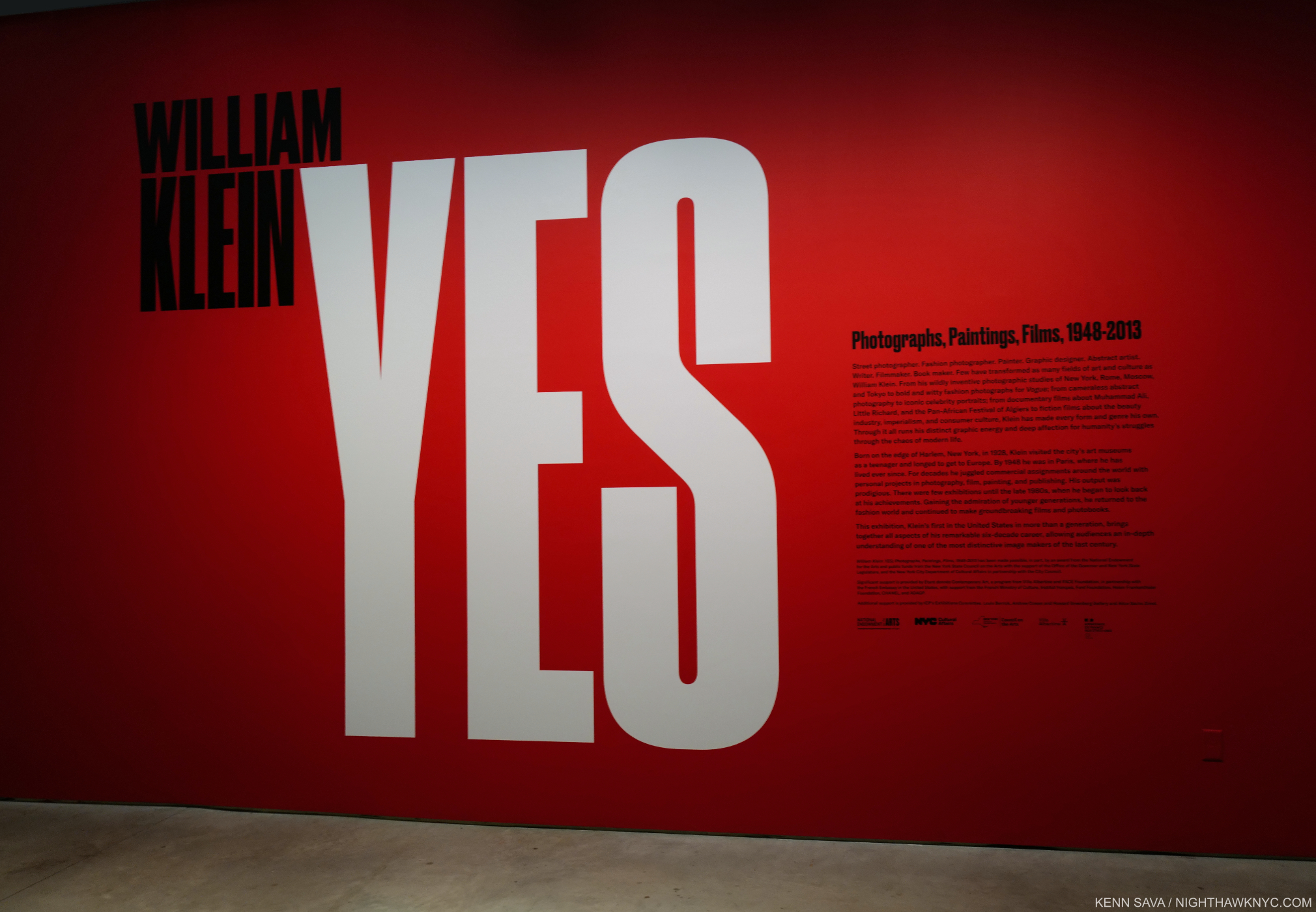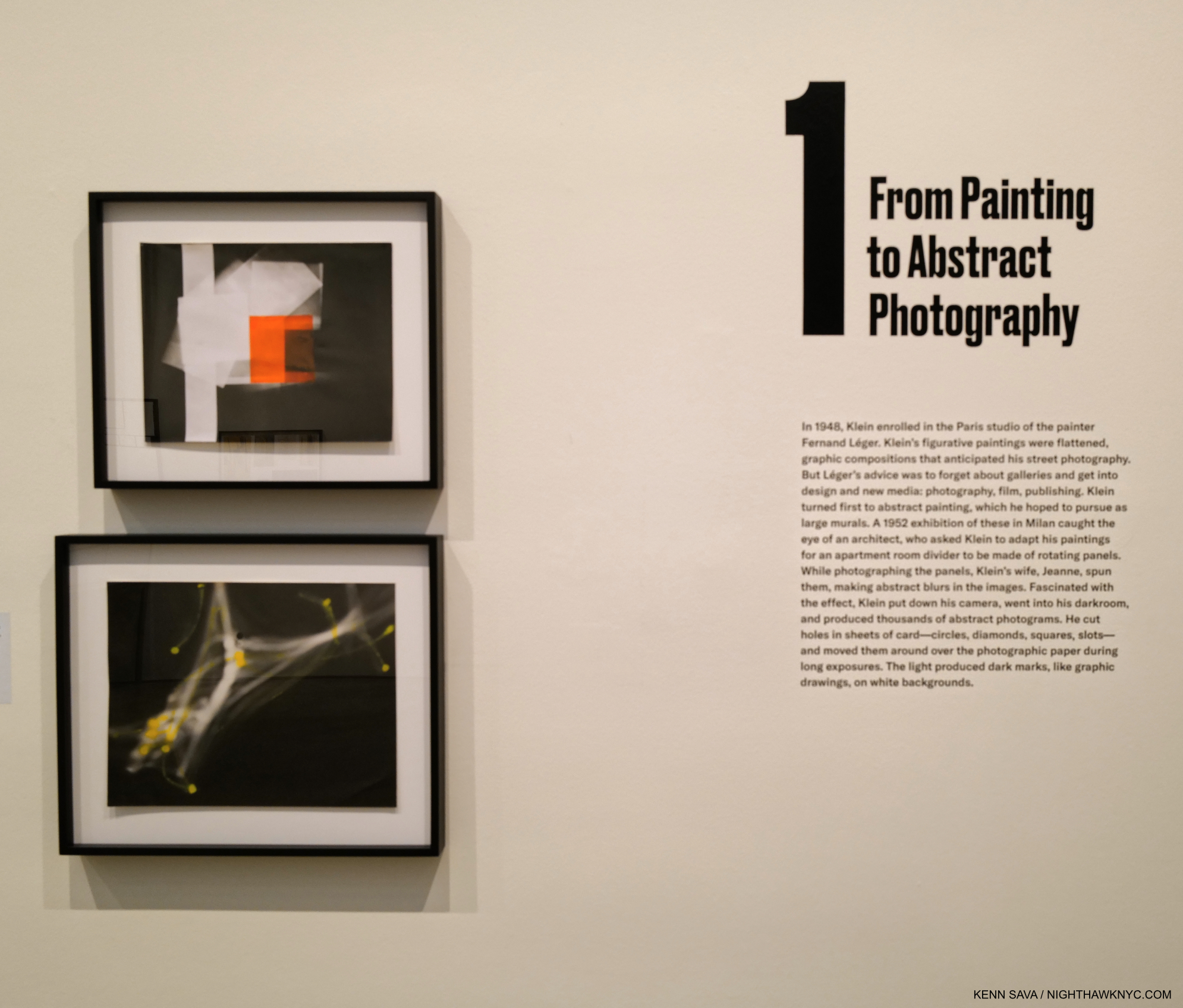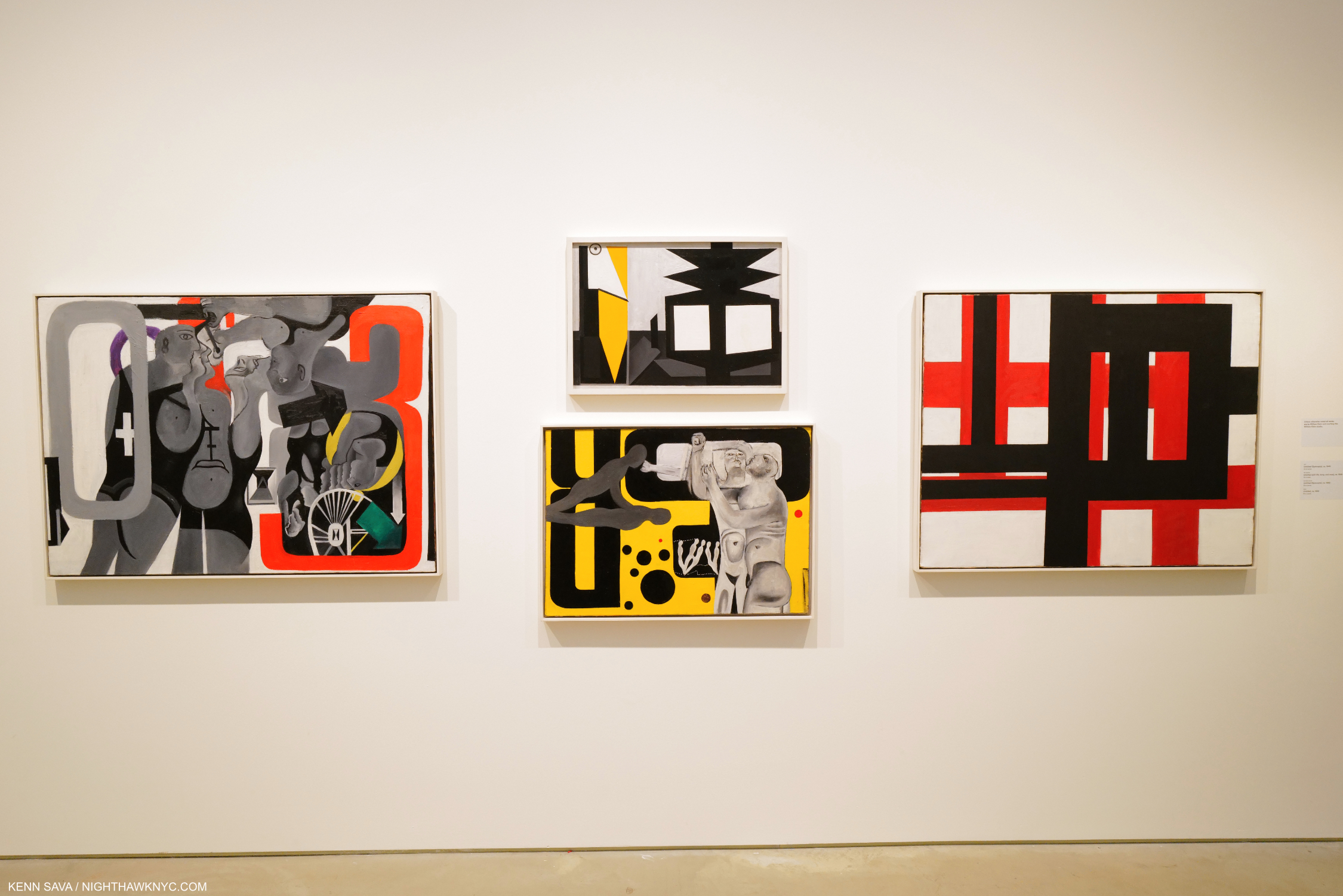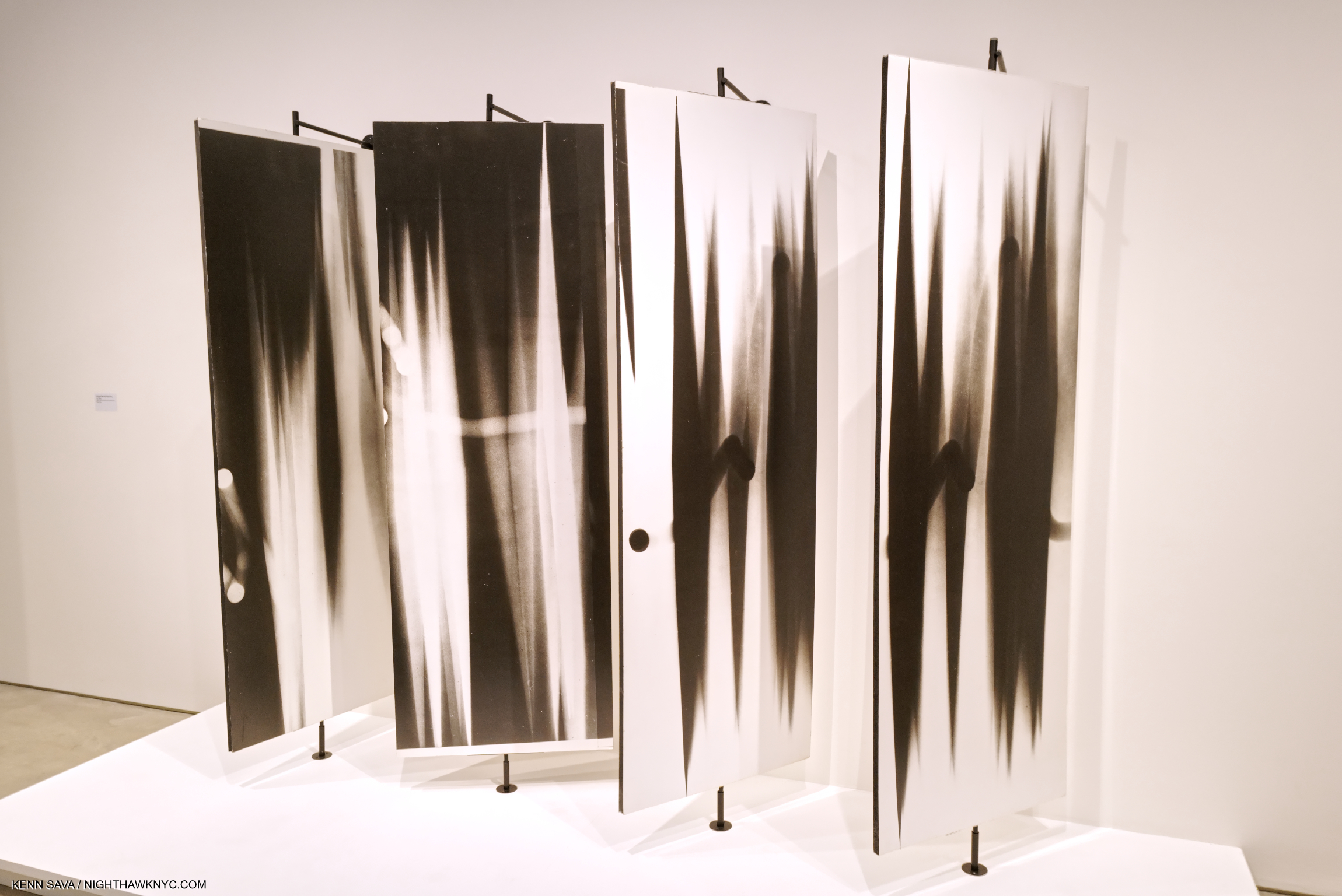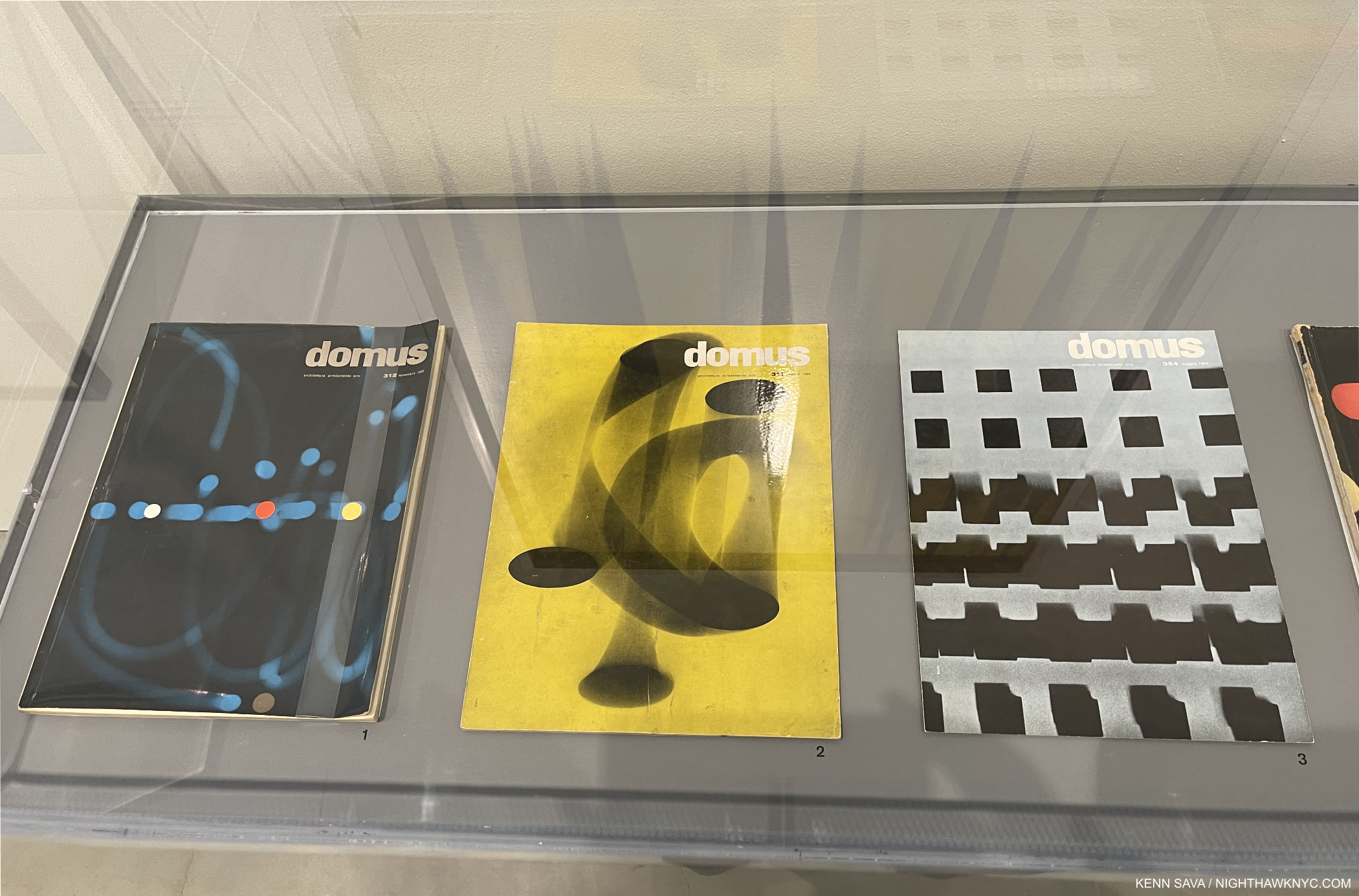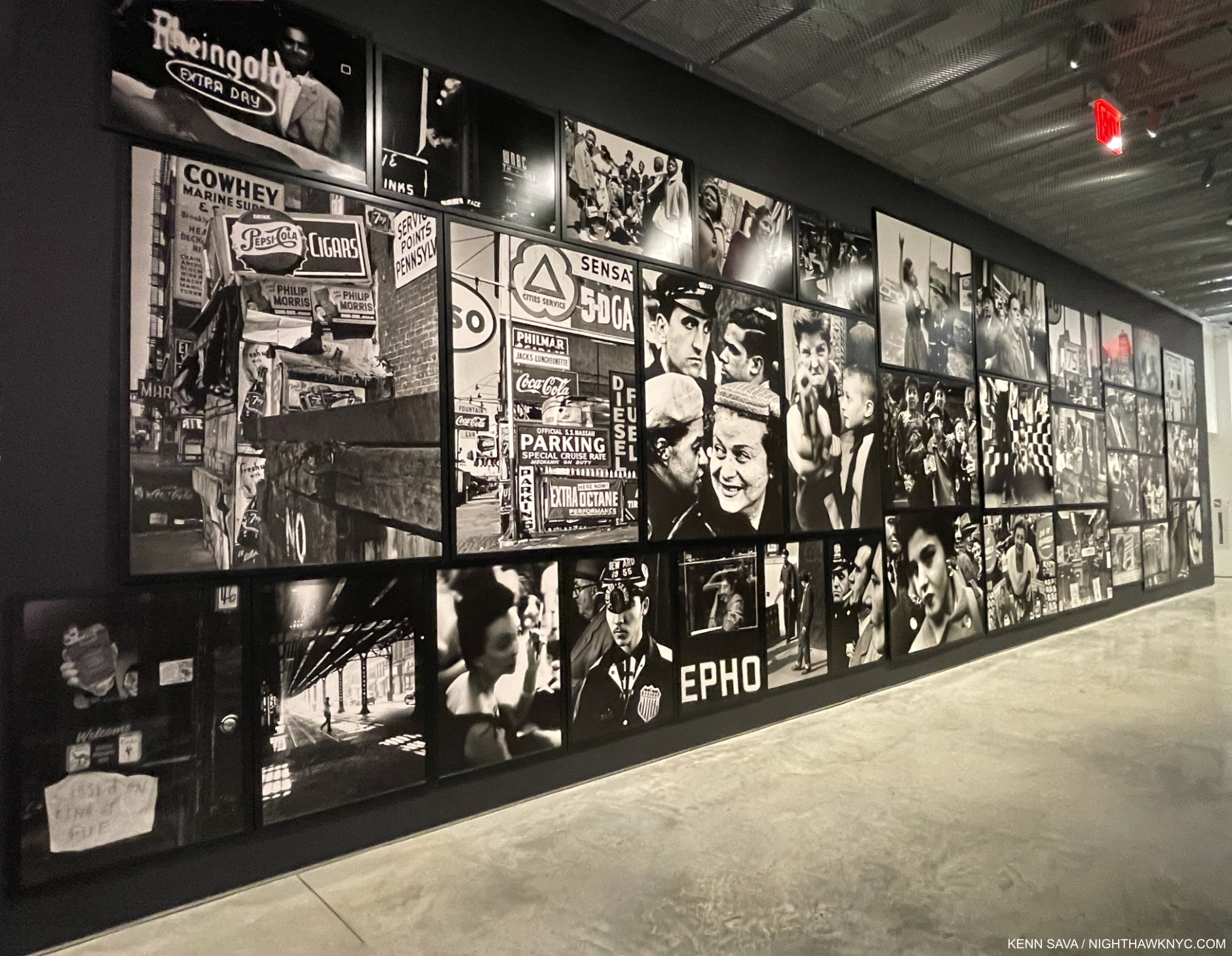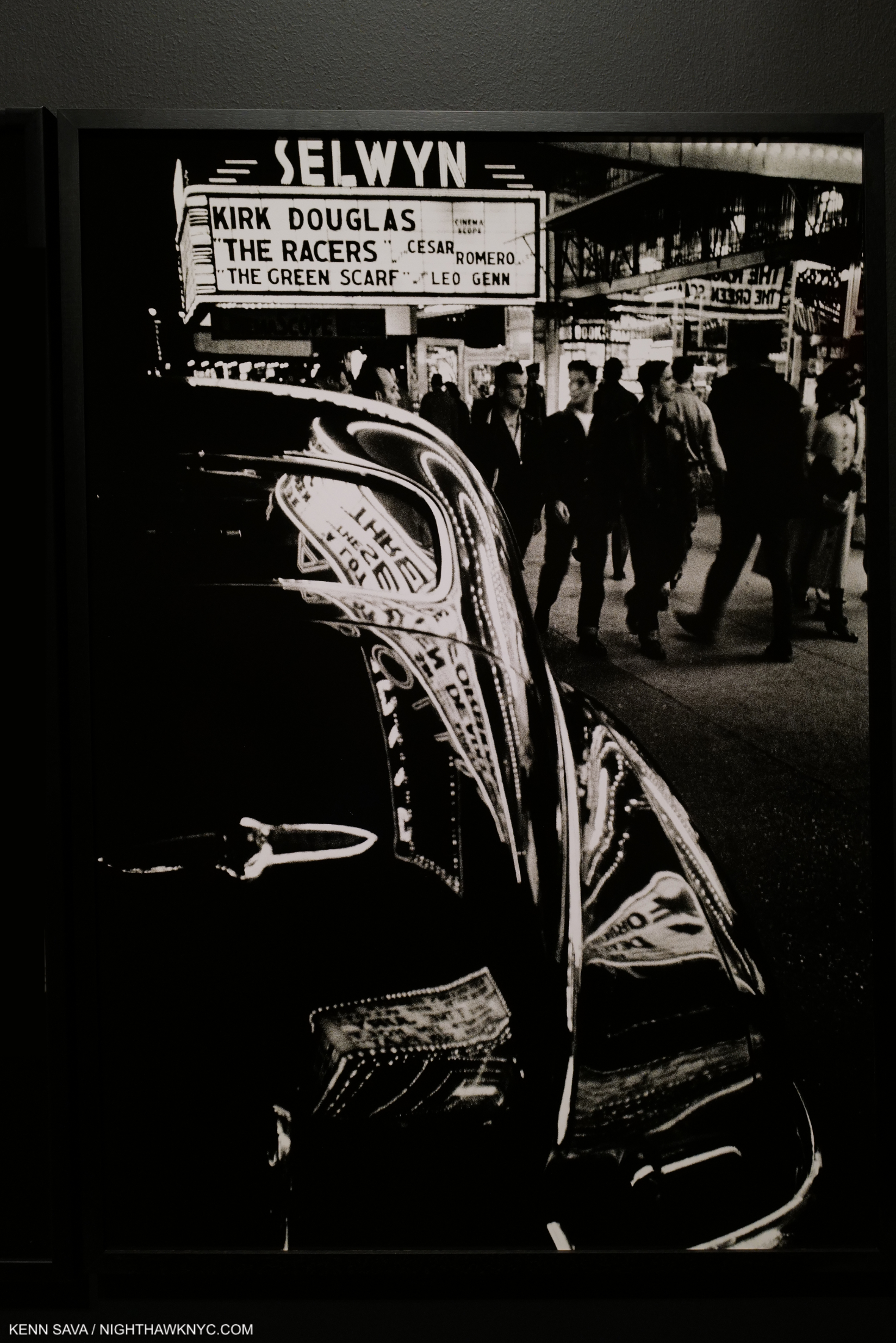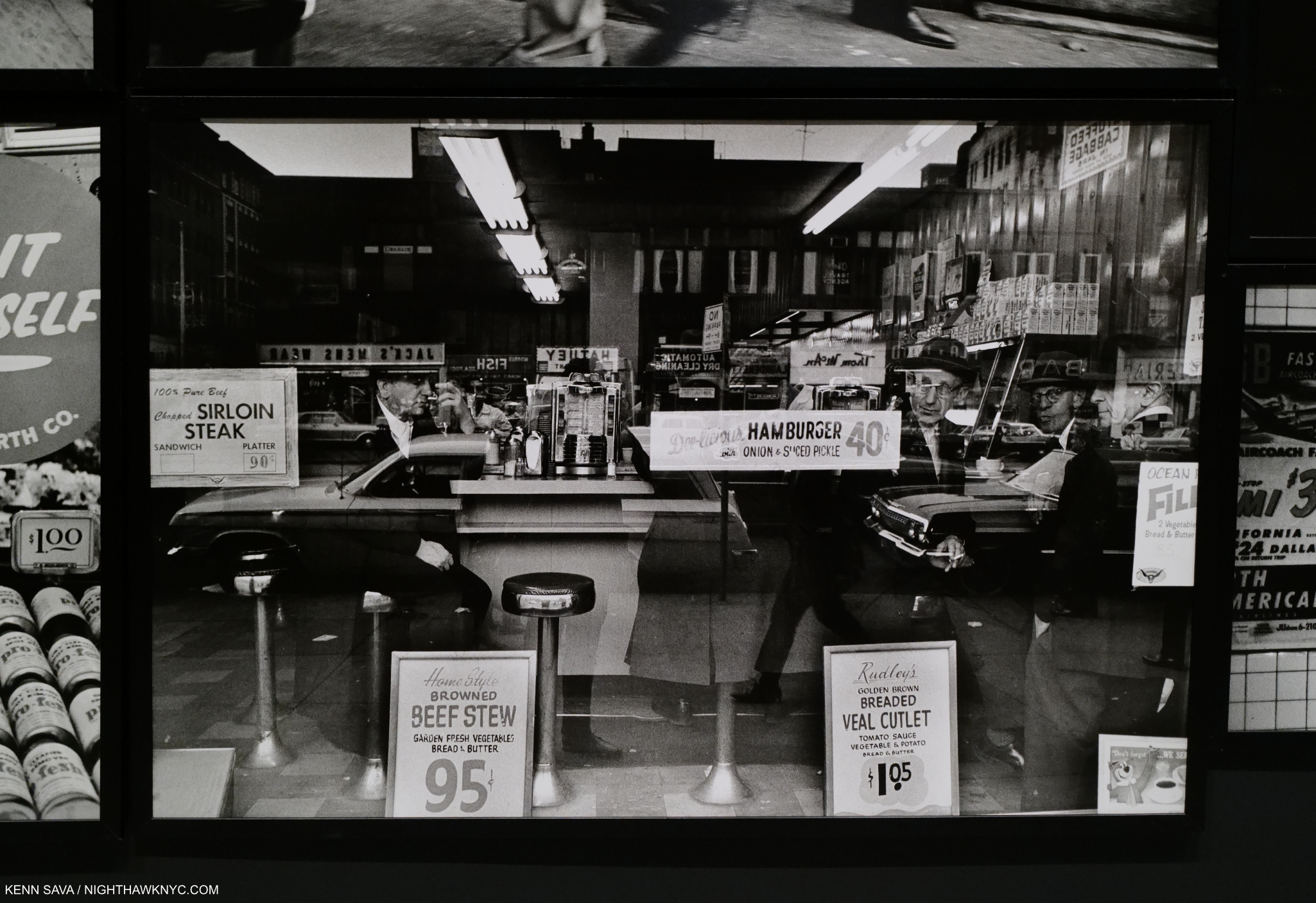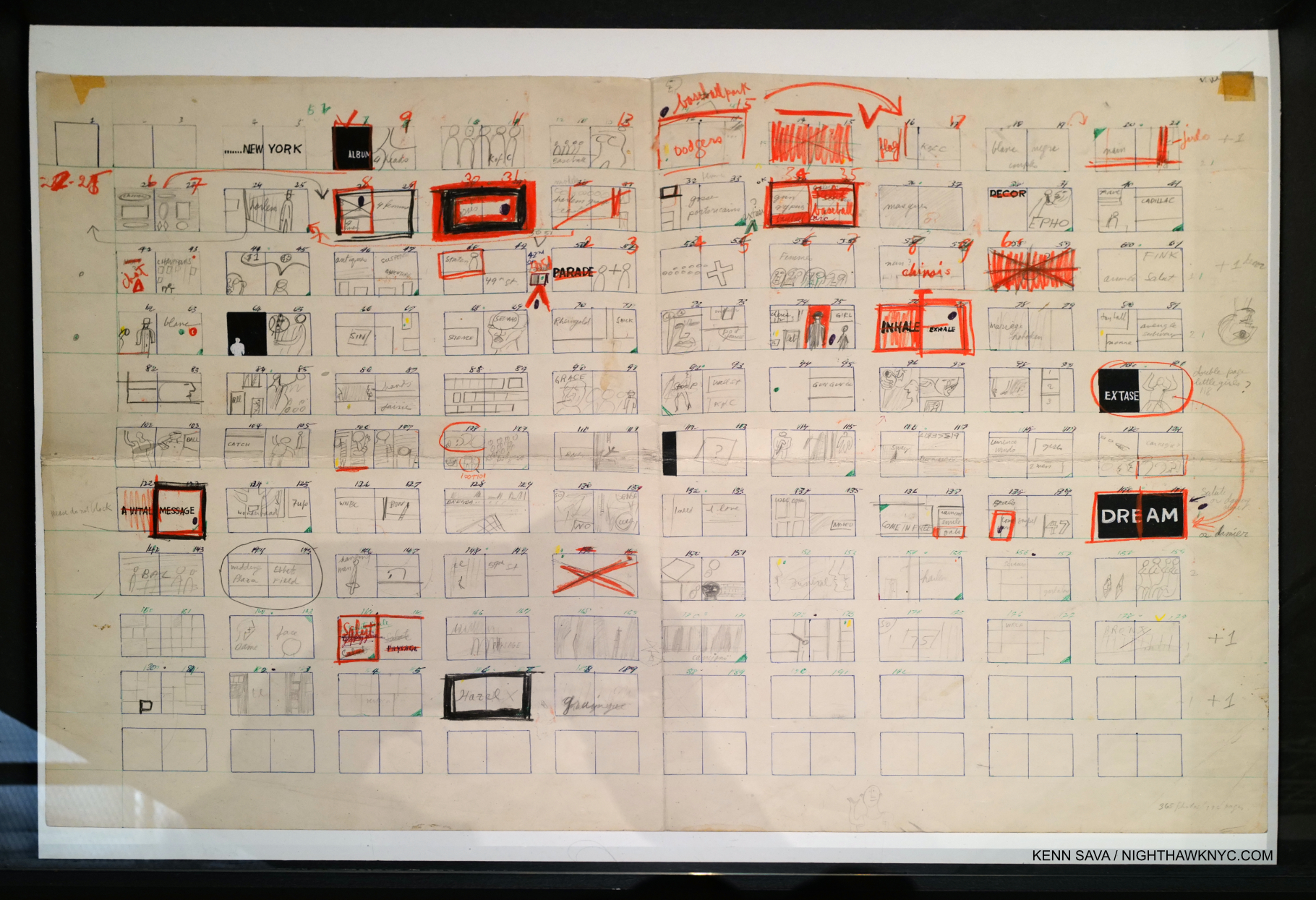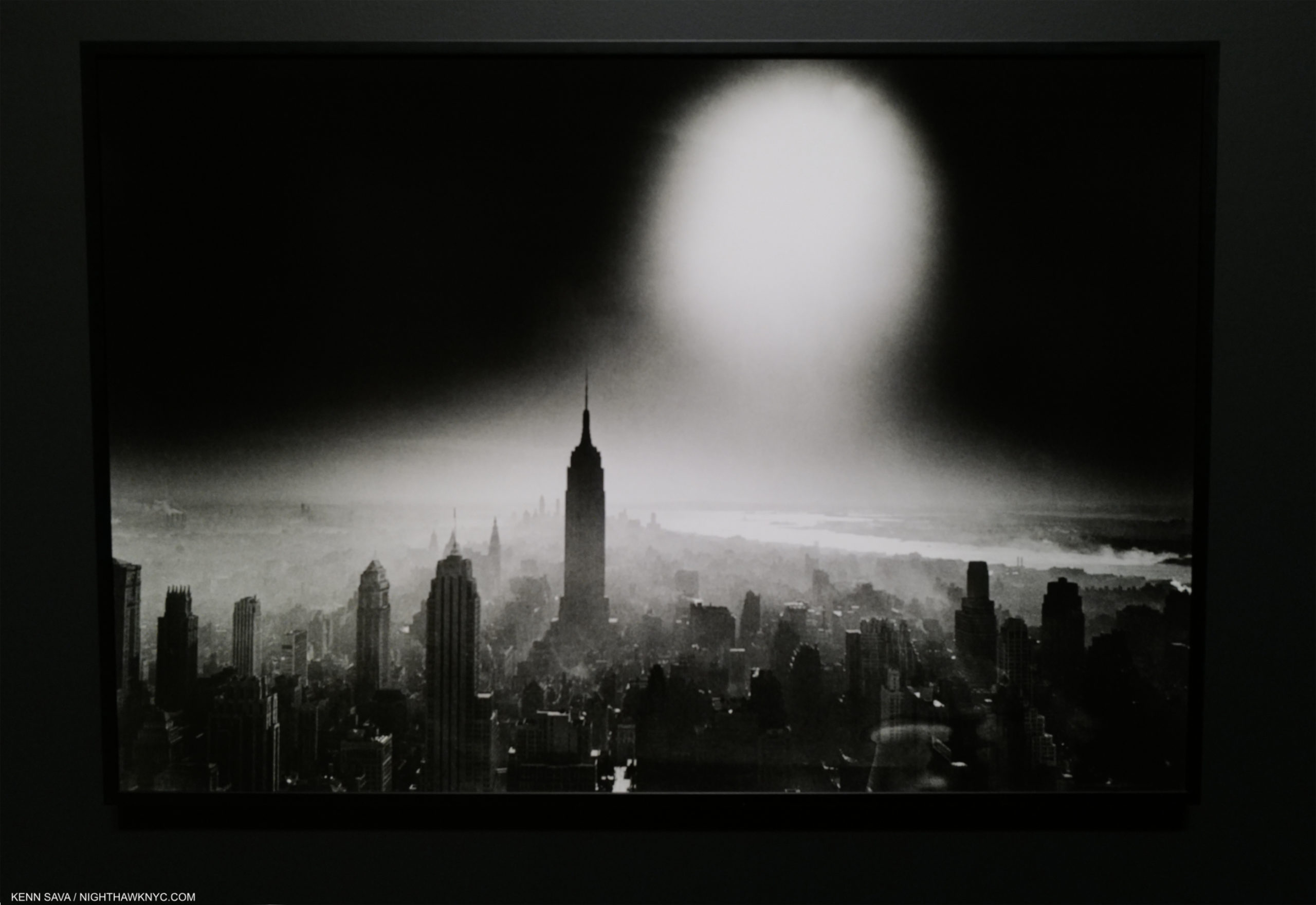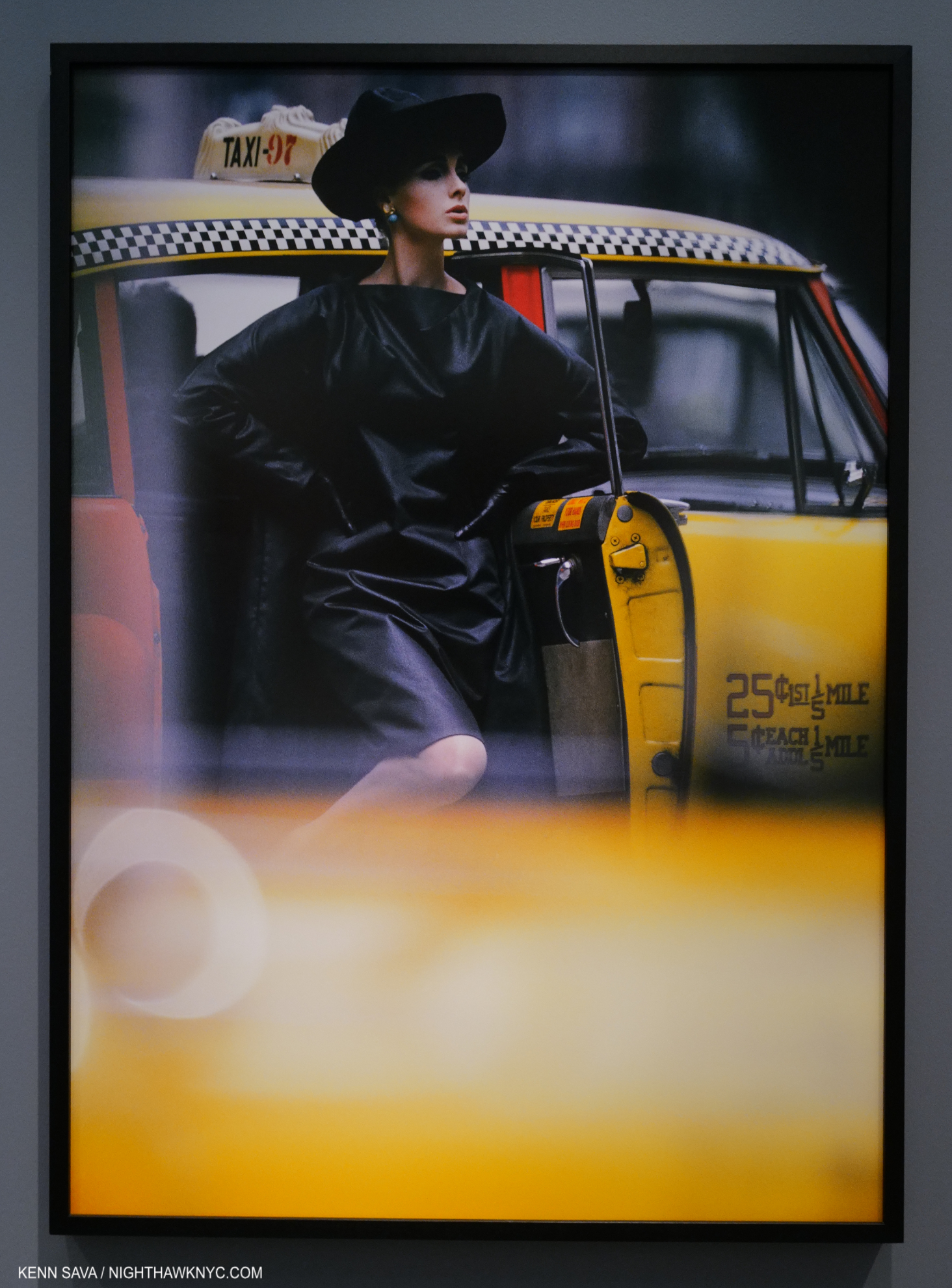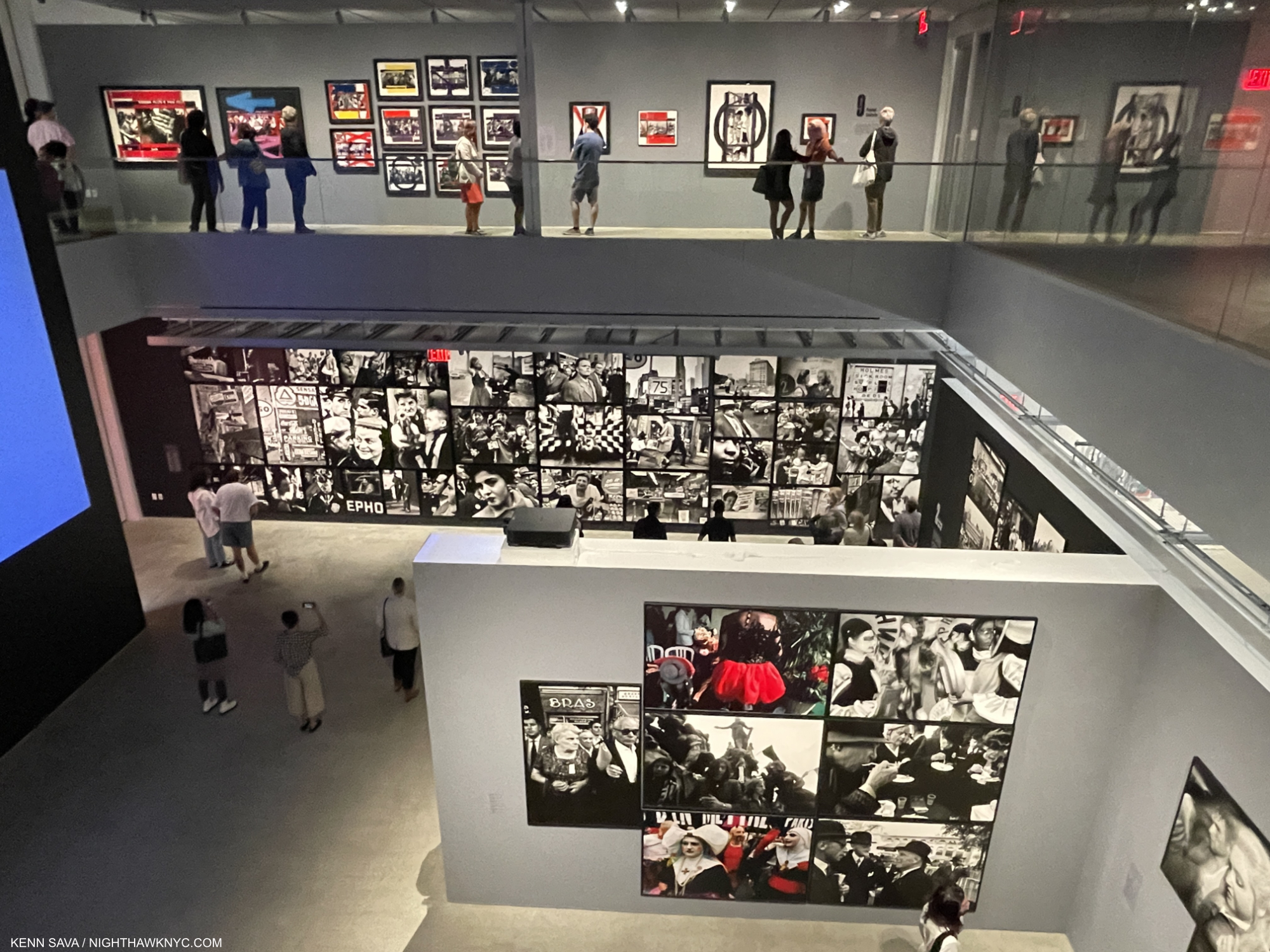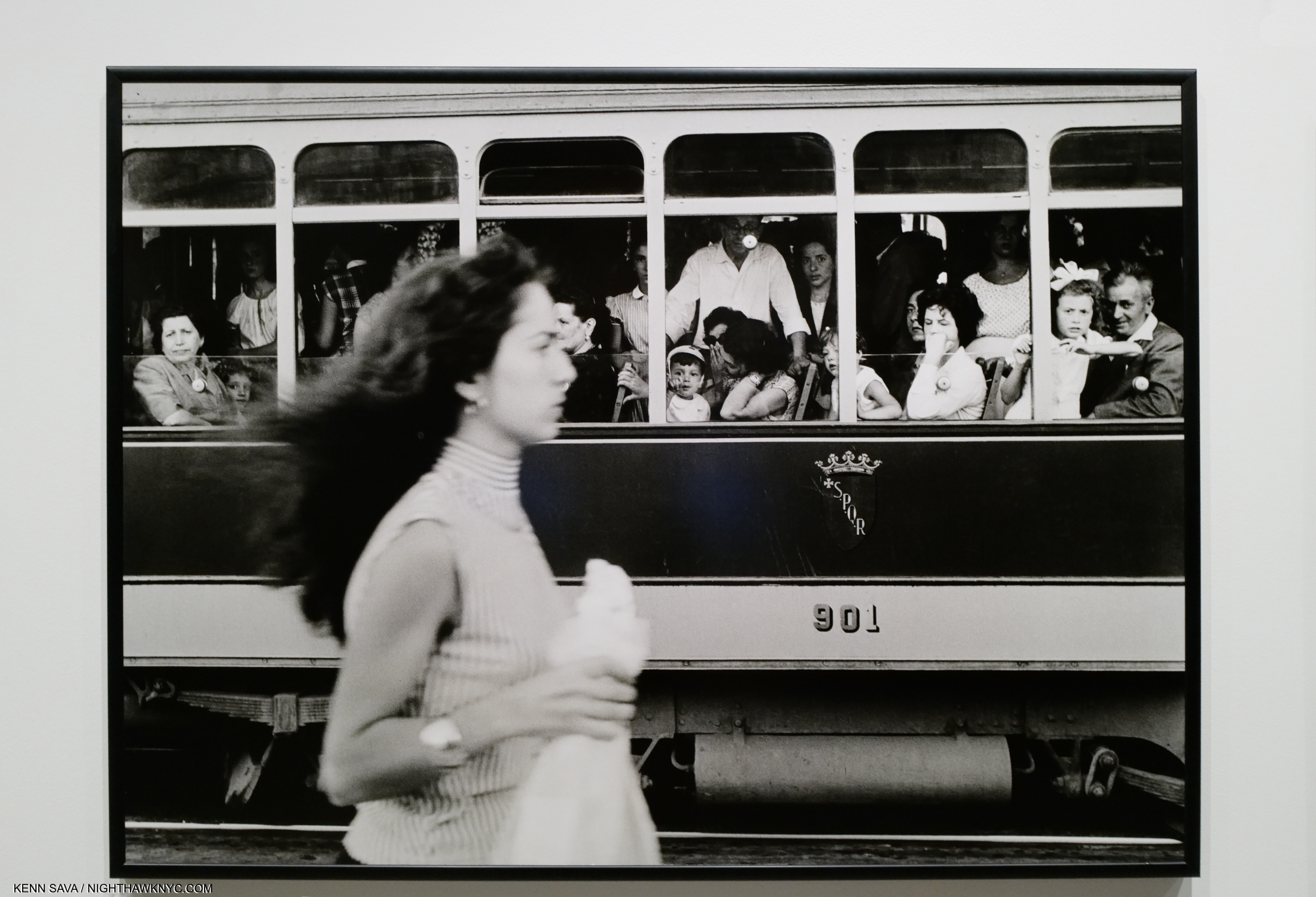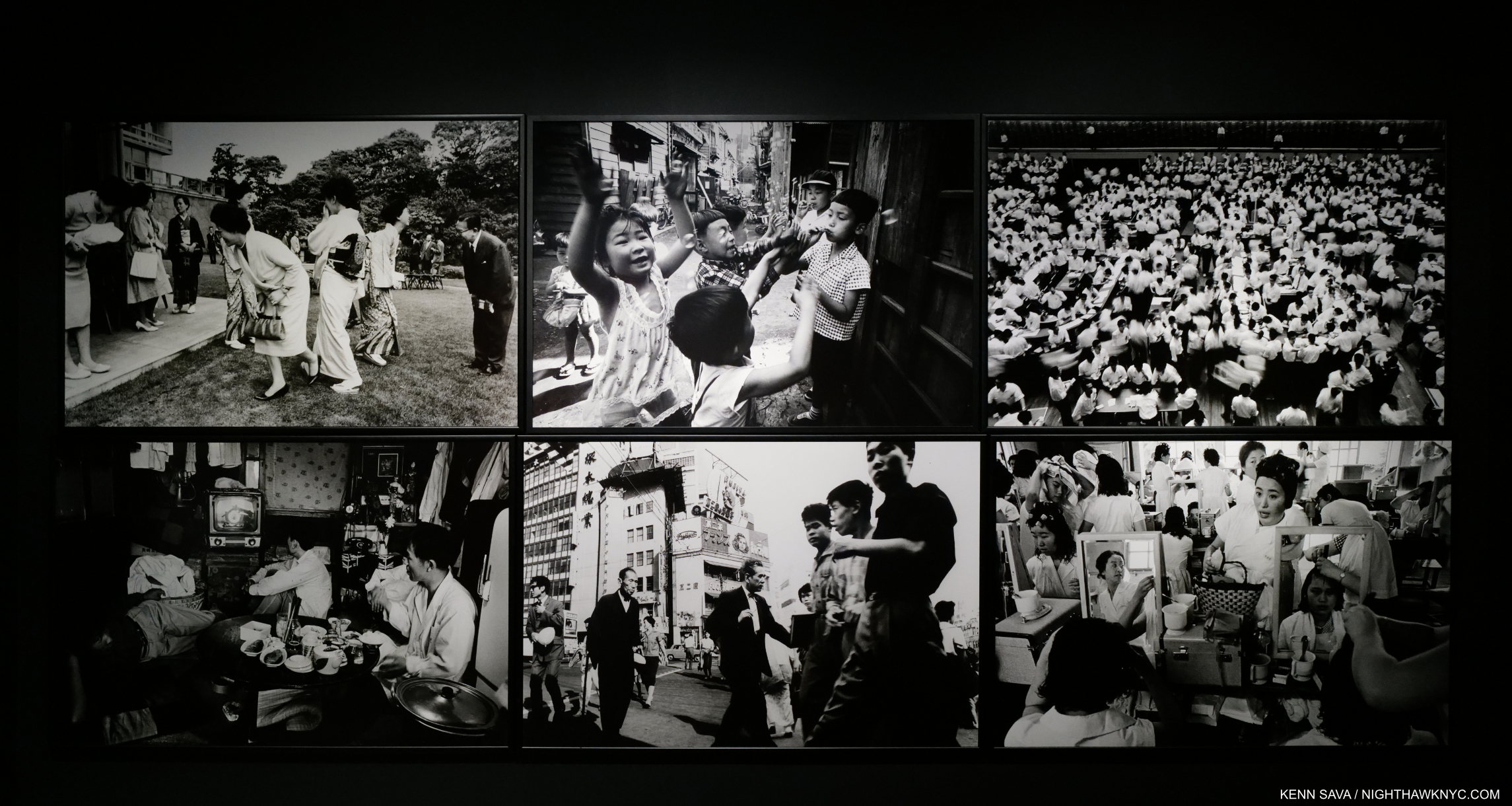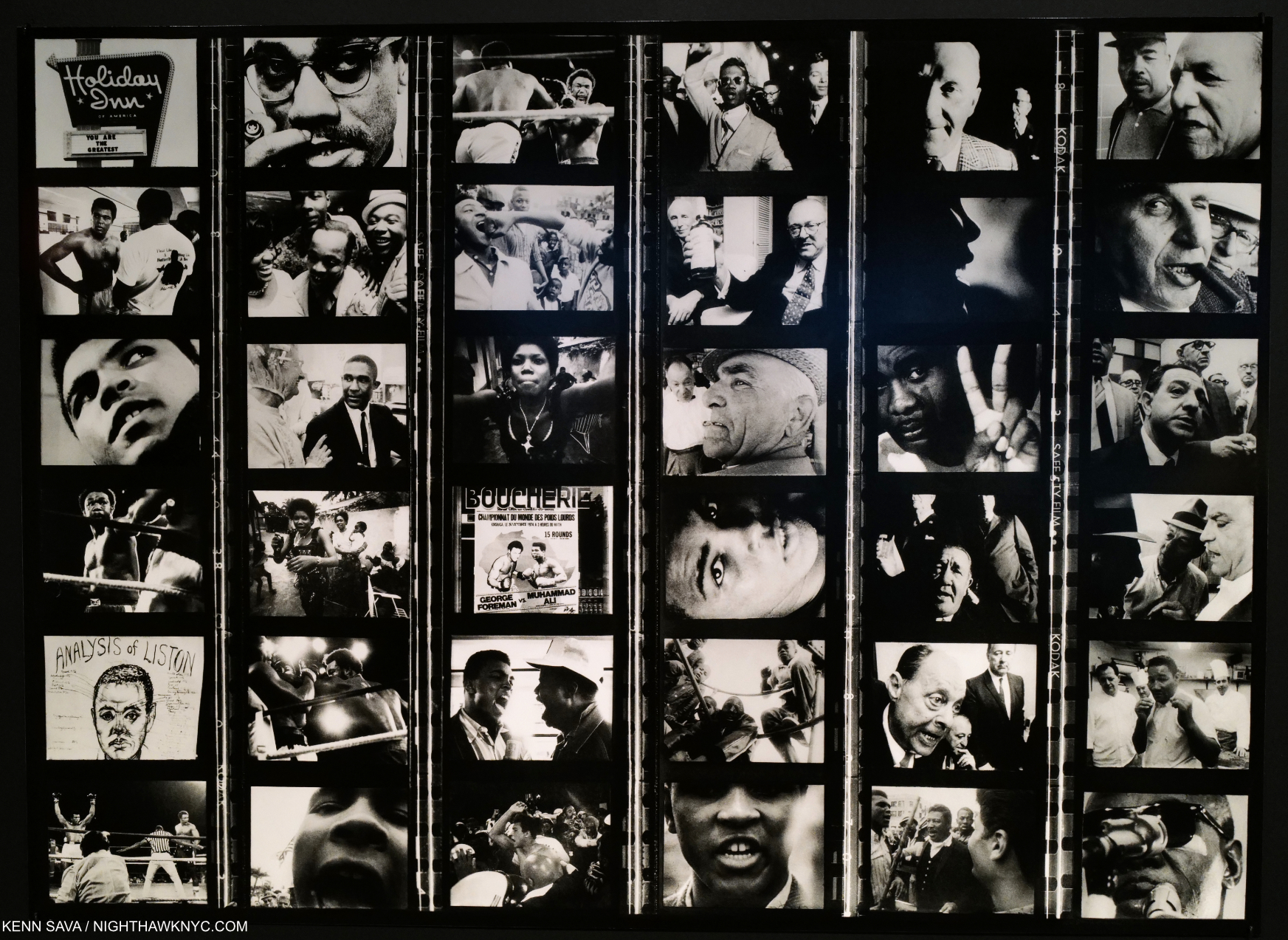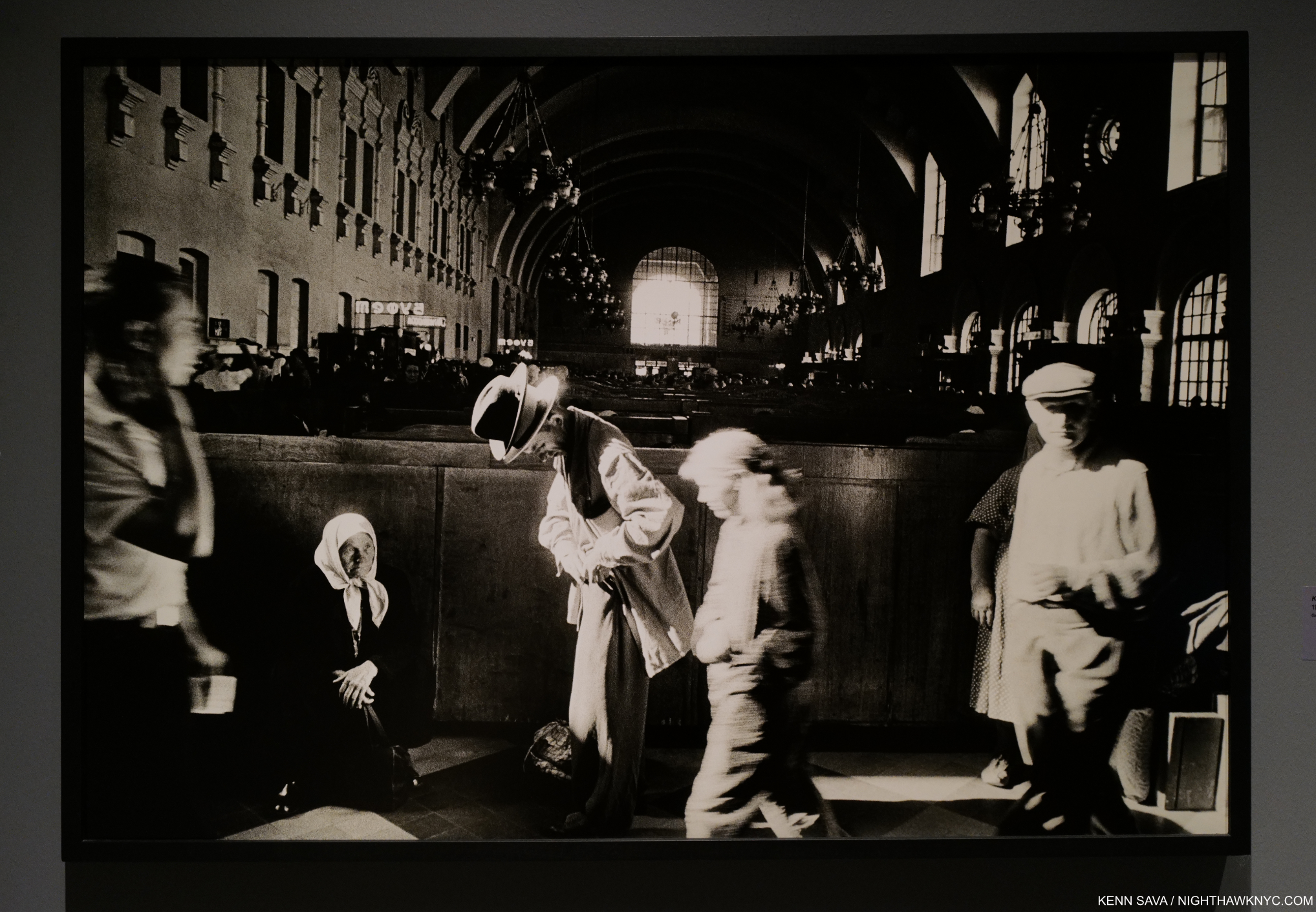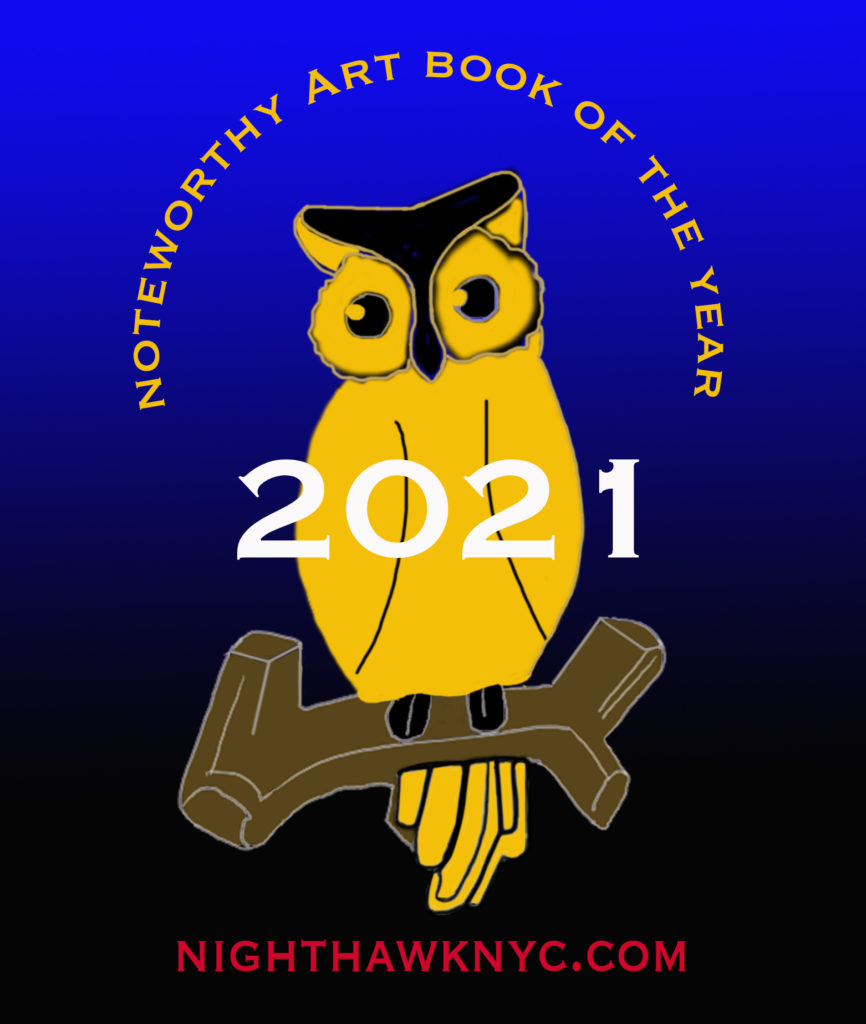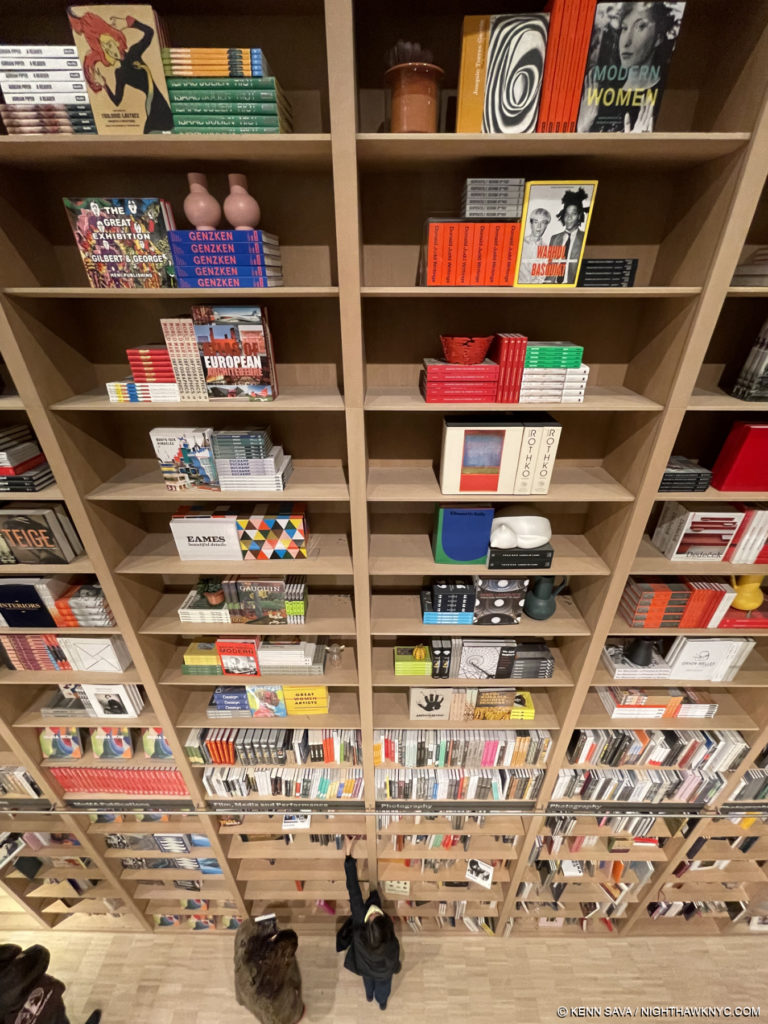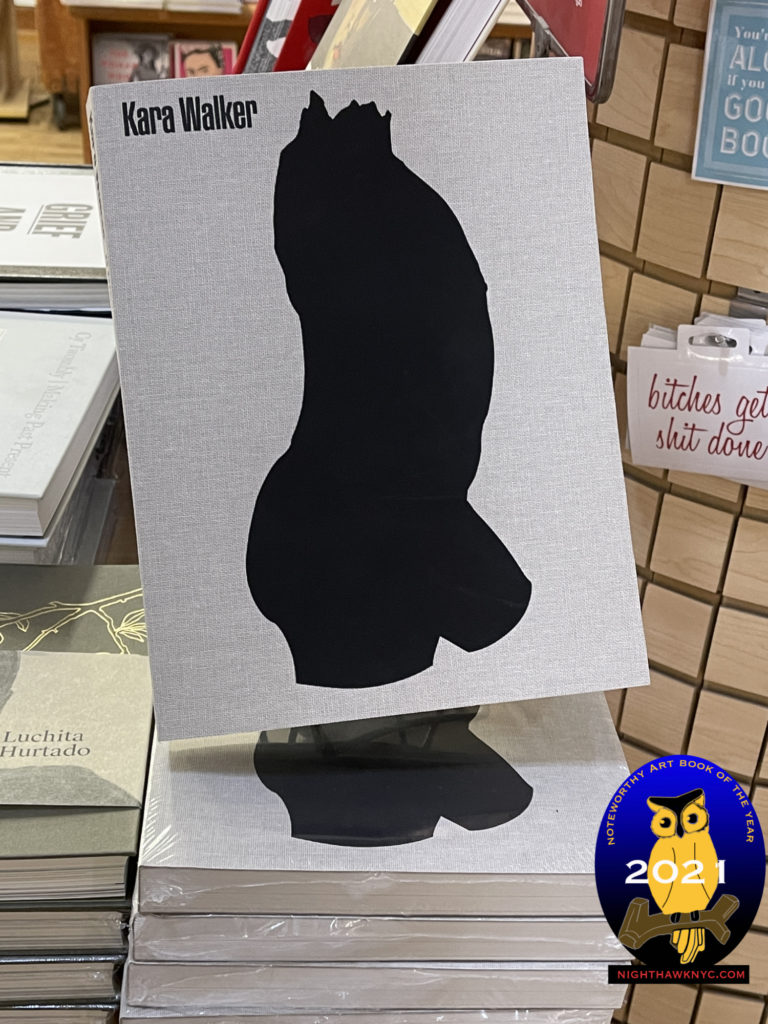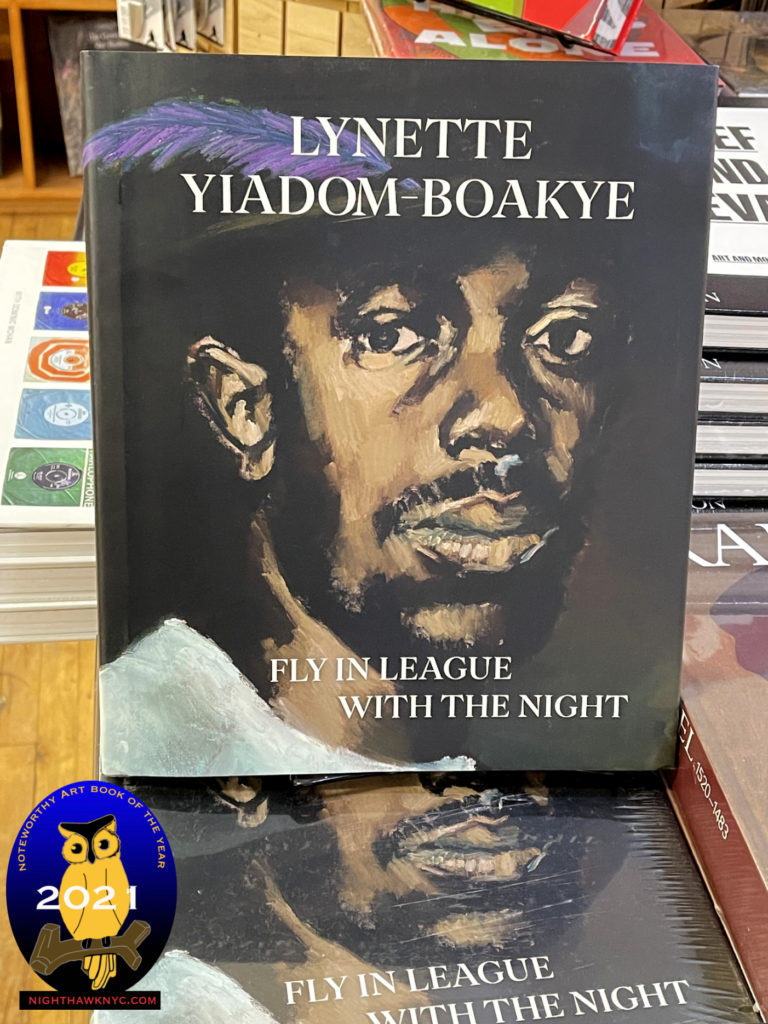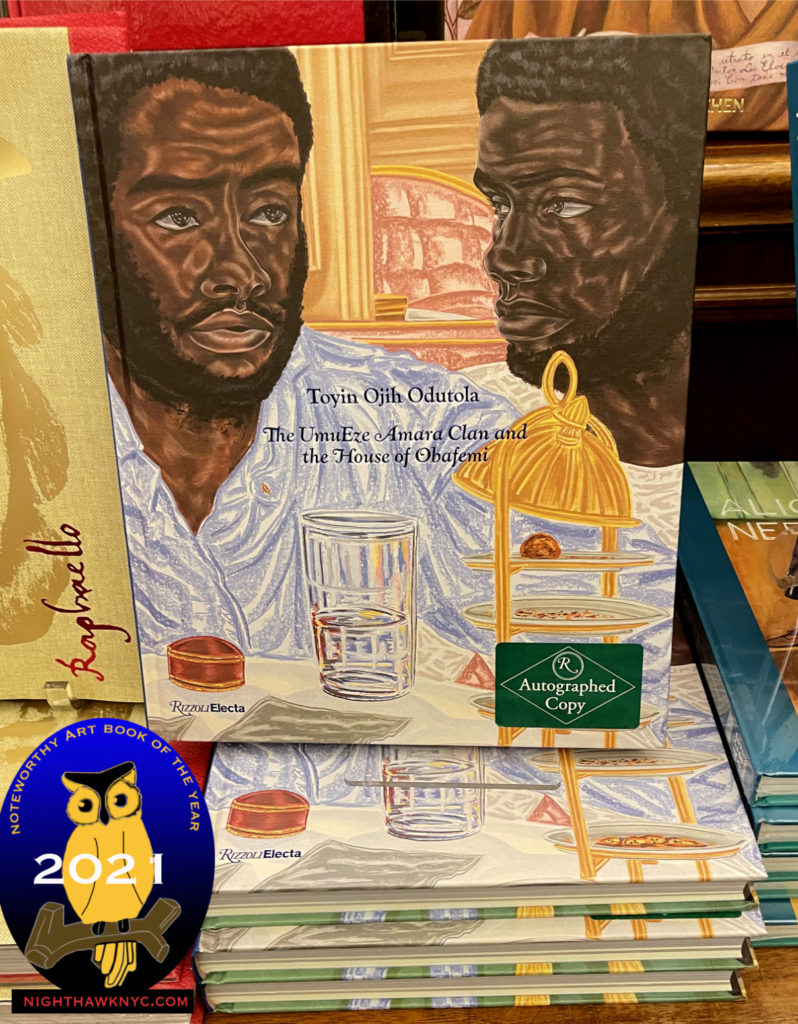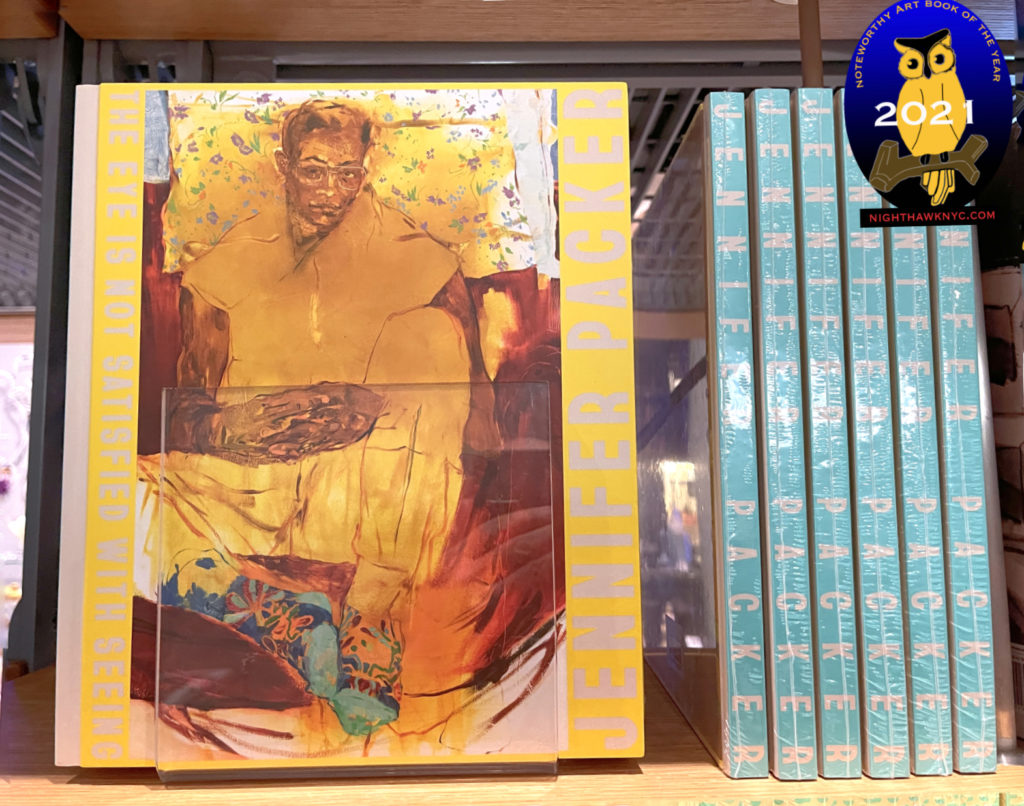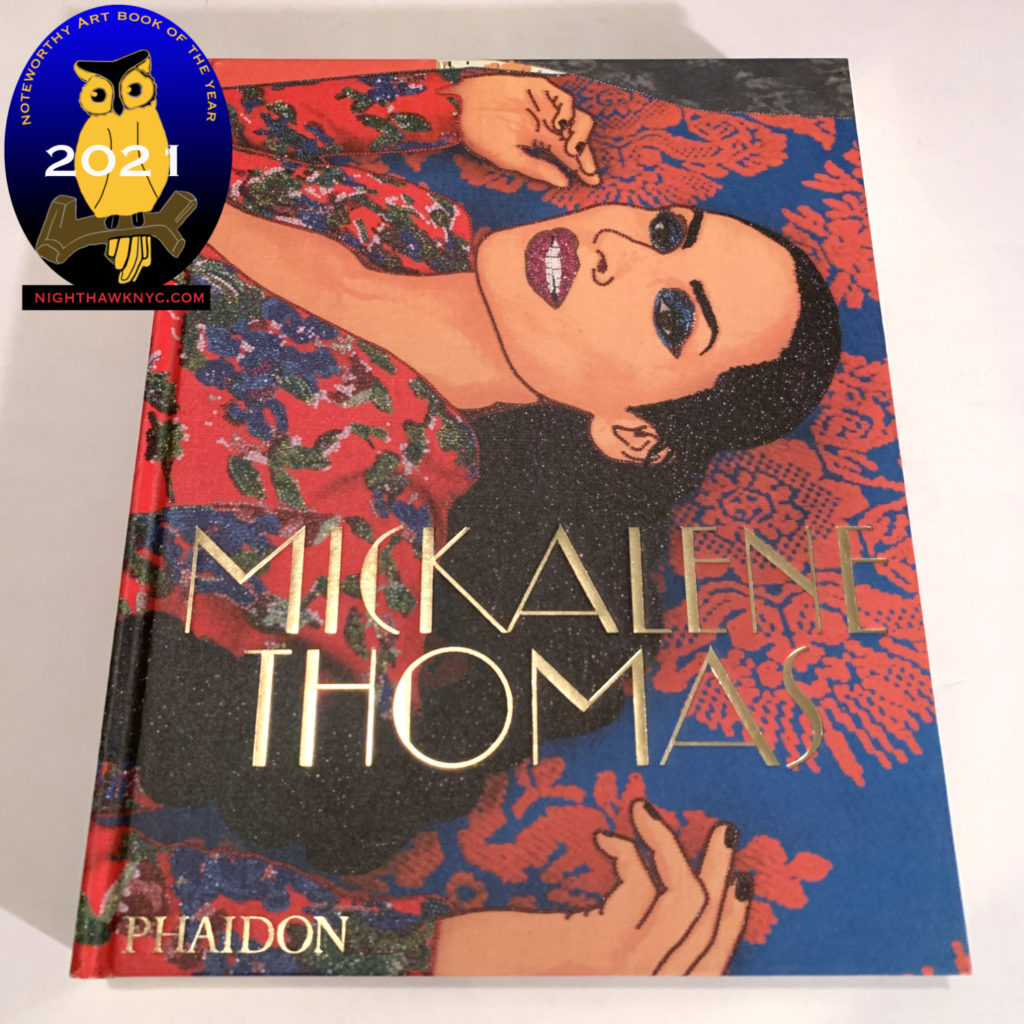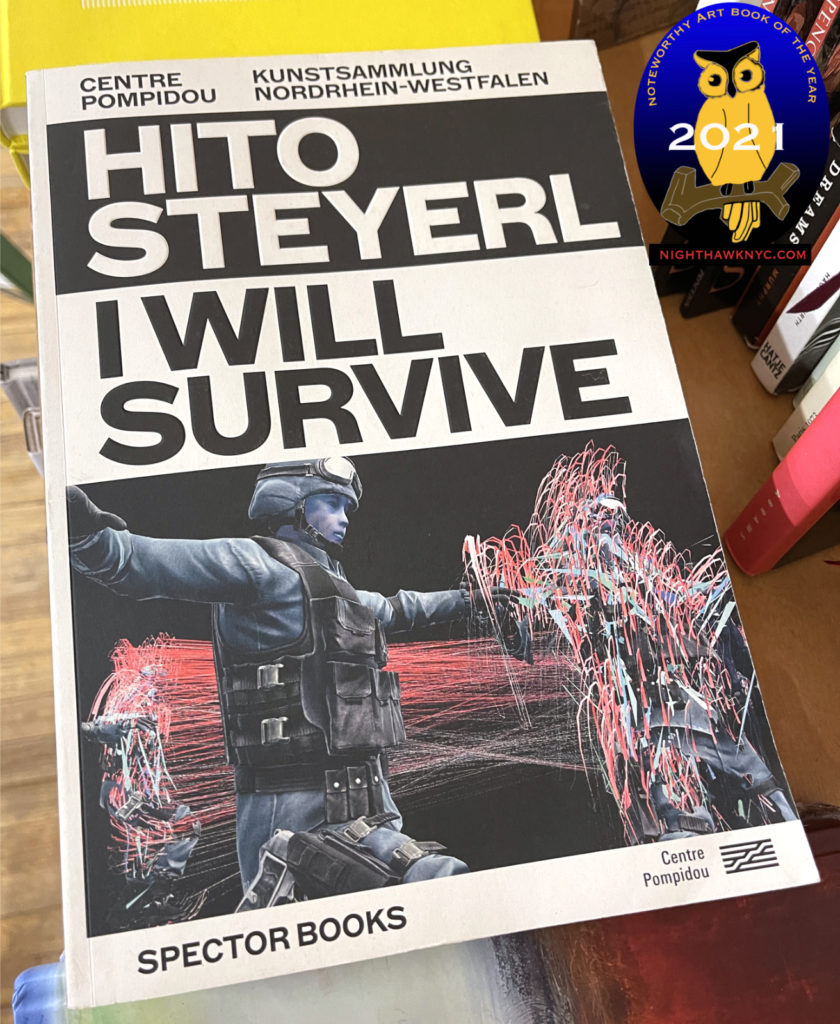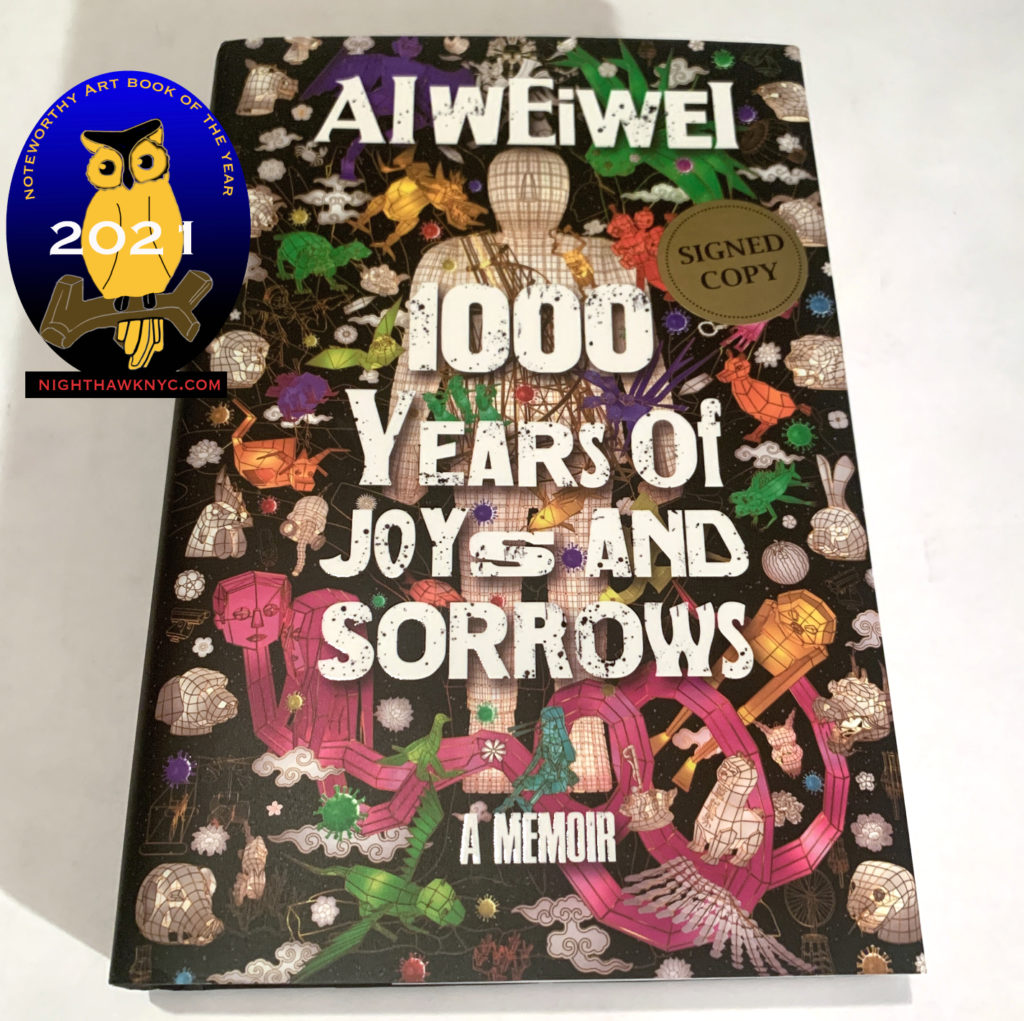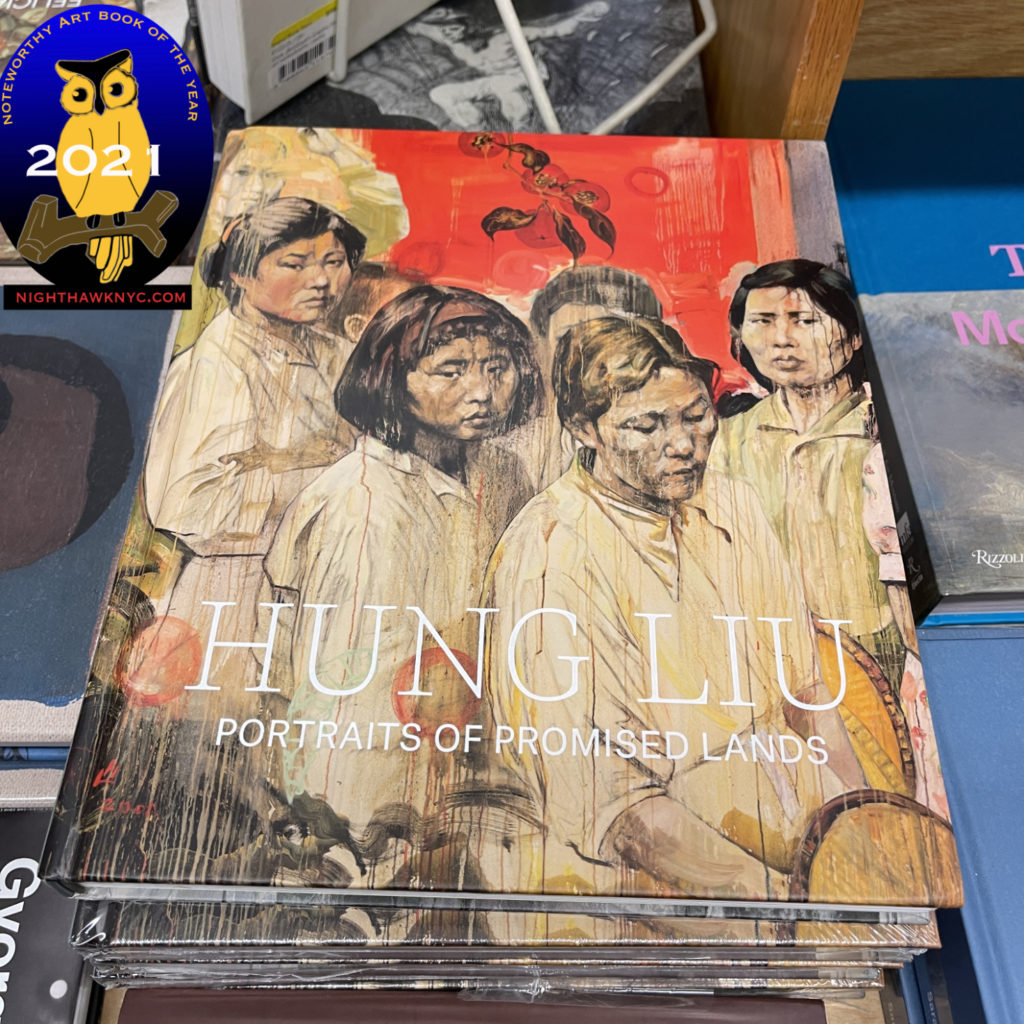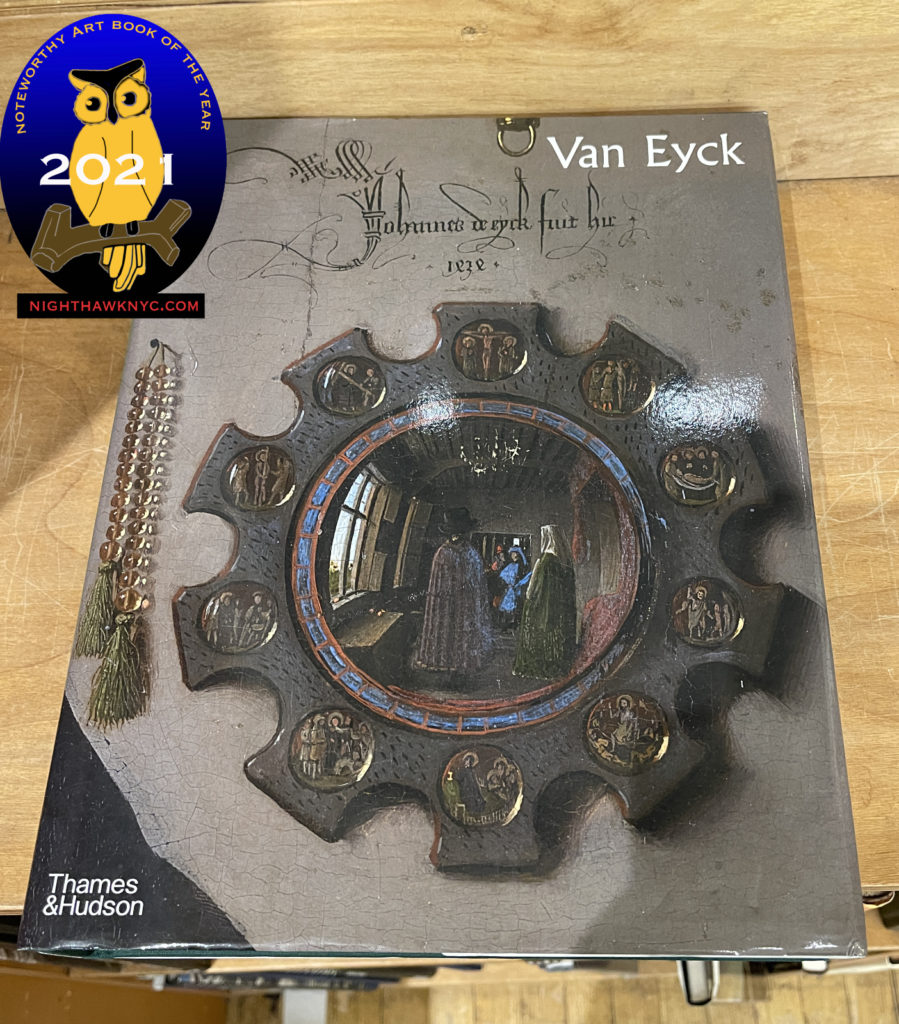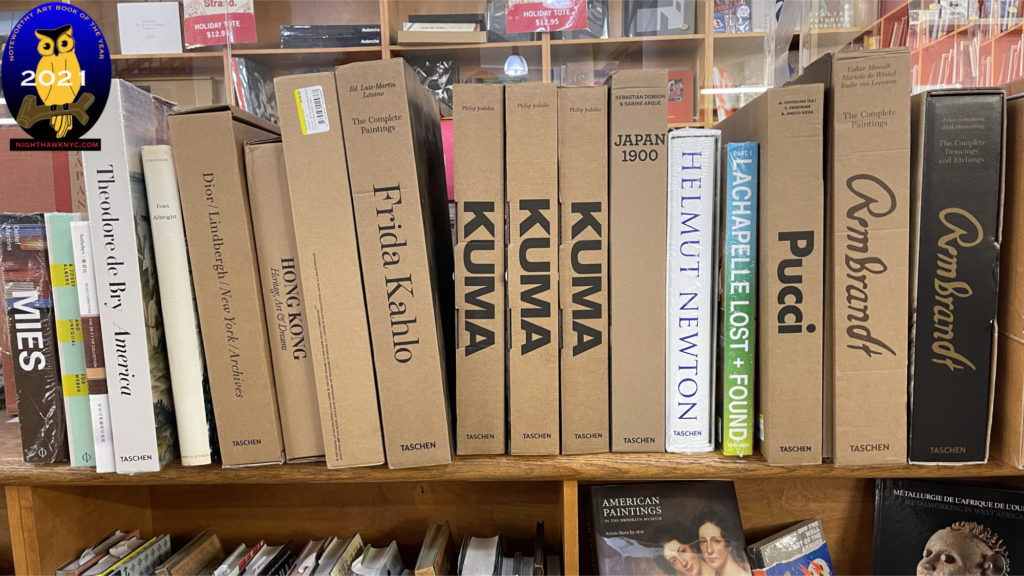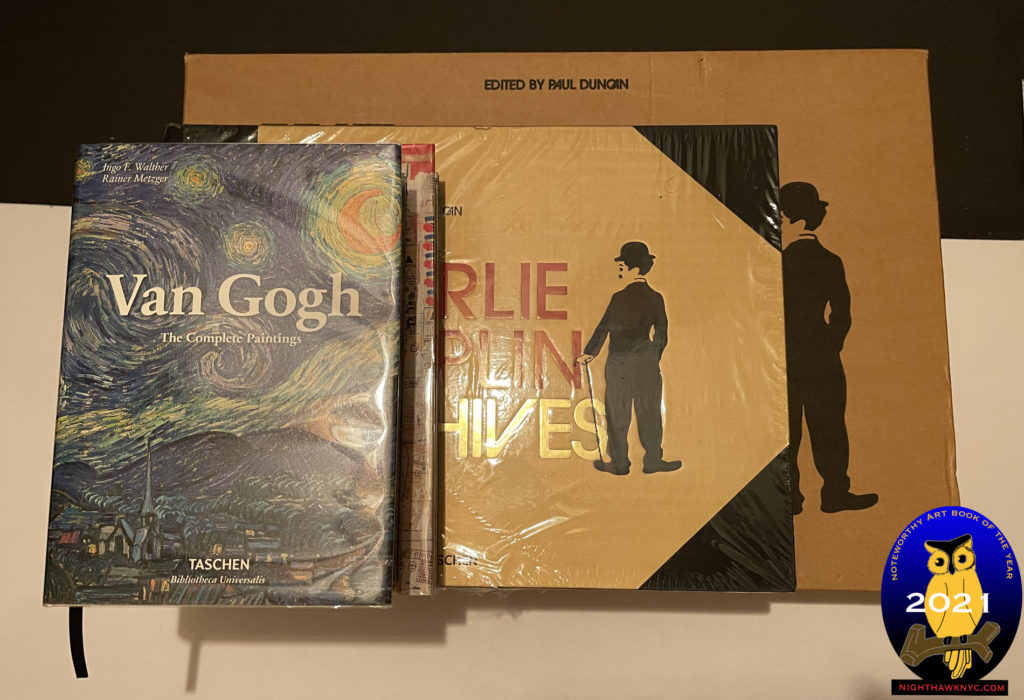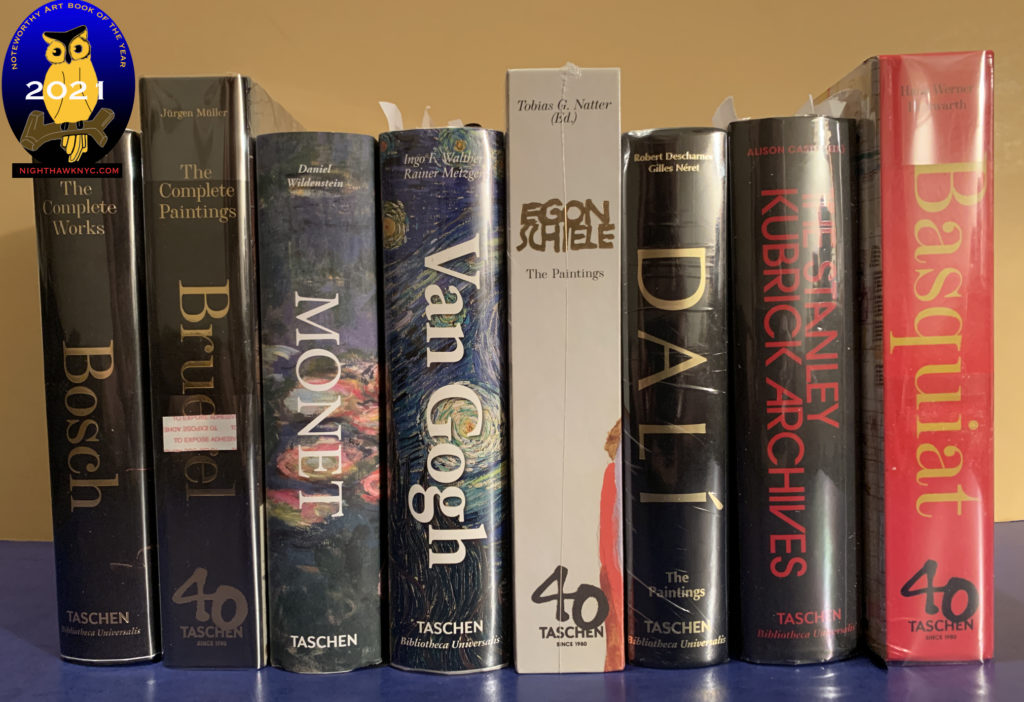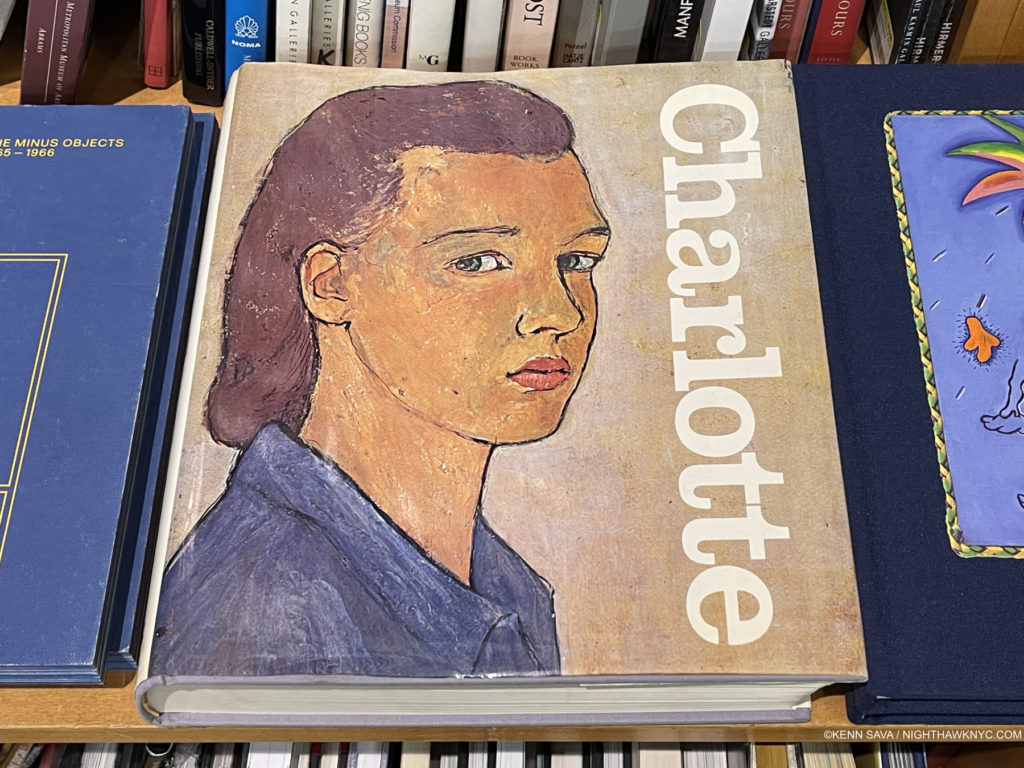Written & Photographed by Kenn Sava (*except as credited)
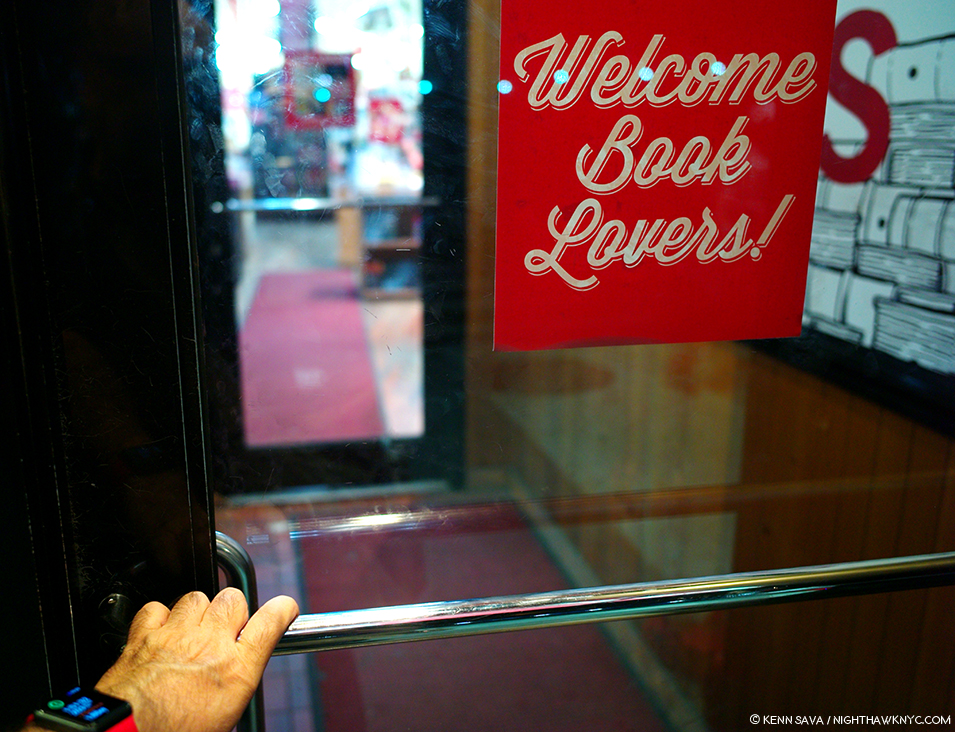
Let’s go book shopping! As I list PhotoBooks I consider NoteWorthy, let’s remember the Bookstores that are still left where you can actually see these books. The Strand Bookstore, NYC, is one of those I frequent. I hope there is at least one near you. Click any Photo for full size.
Another day. Another chance to look at PhotoBooks, to see life, and the world, through someone else’s eyes, to learn something and just maybe have a revelation. I look at A LOT of PhotoBooks (and Art Books). Nary a day passes that I don’t see one/some somewhere. In bookstores, used bookstores, museum stores, galleries, book fairs, pop-up shops, garage sales, online- you name it. Both, just released PhotoBooks and those I’ve only known through legend. I’m getting close to eating, sleeping and breathing Photo & ArtBooks. Why? I use them to research my pieces, to learn about Artists known & unknown to me, and to explore that fascinating phenomenon that is the PhotoBook- which, in its ultimate form, is a work of Art unto itself. A third of those I see I never look at, or think about, a second time. About 40% I do either look at again or think about again. And, far too many of them I purchase. (For the record- Yes, I’ve put my money where my mouth is. I bought every book on this list.)
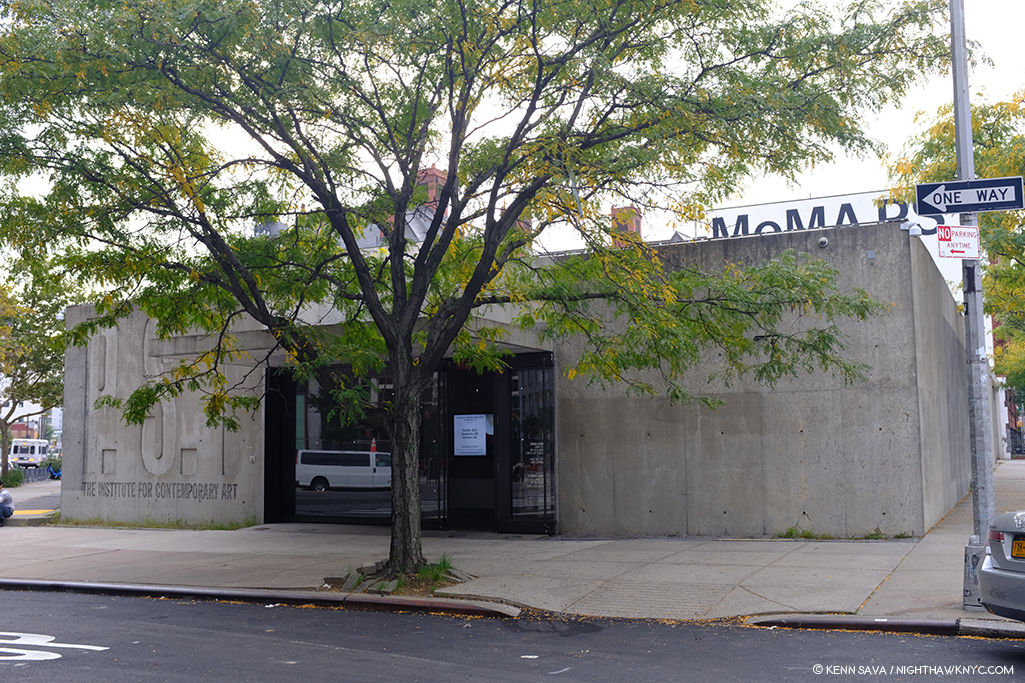
MoMA PS1, Long Island City, scene of the recent New York Art Book Fair. In case you don’t know, there’s a quite good full time Art & PhotoBook store tucked inside, in addition to the excellent magazine shop off the lobby, right behind that grey wall to the right.
So, after all of this looking, I’ve decided to share a few of those here that have turned out to be especially memorable, or “NoteWorthy,” as I’m fond of saying (There’s no such thing as “best” in the Arts, in my view. I don’t believe in comparing Artists or creative work). Compiling this has been very hard.
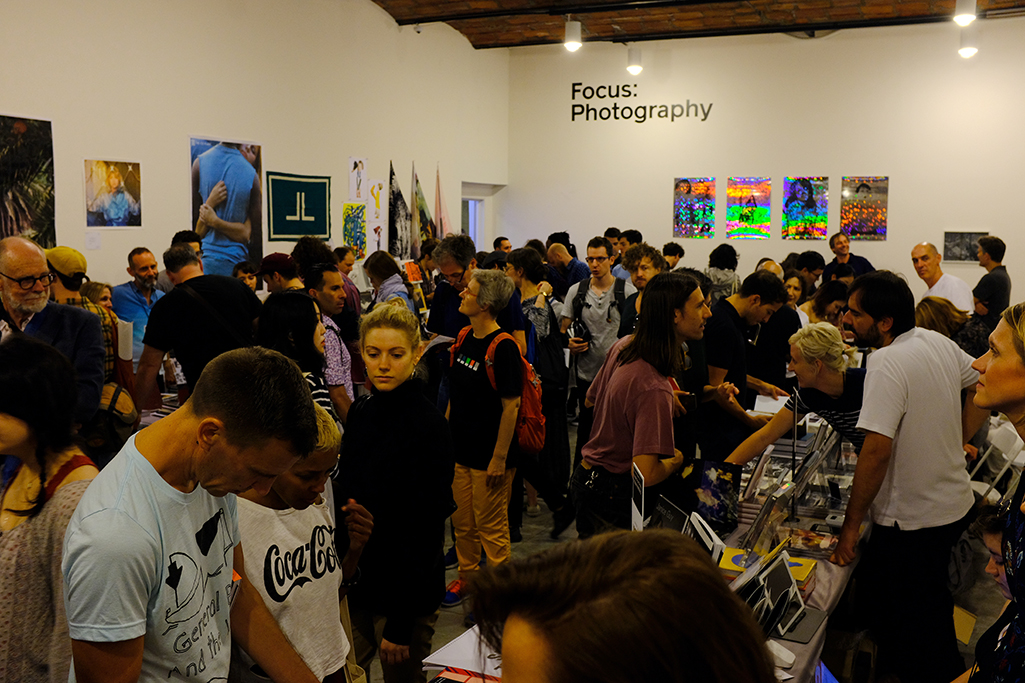
Depth of Field. The scene in just one of the many rooms at the New York Art Book Fair (NYABF) @ MoMA PS1, Long Island City, September 21, 2018. I handed my camera to Kris Graves who took this Photo with it from behind his table.
First, we live at a moment when there are more PhotoBooks being produced than ever before. It seems there are an incalculable number of publishers and Artists creating books at a speed I doubt anyone can keep up with. So, as many PhotoBooks as I look at represents only a small percent of those released. Hey, I really tried!
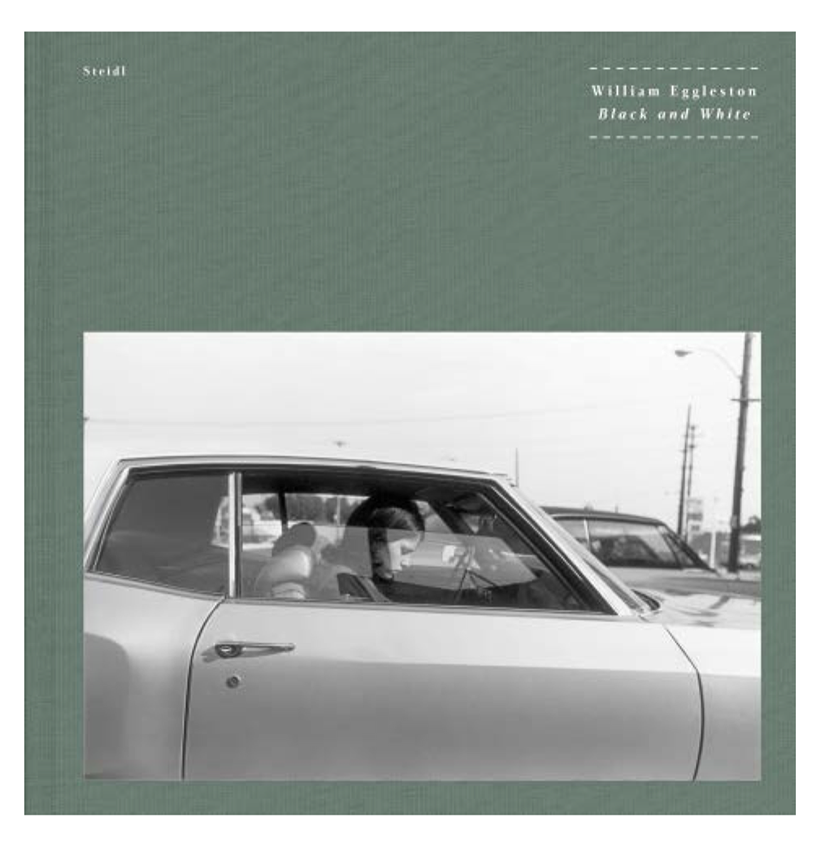
William Eggleston: Black & White. The cover image shown on pages 82-3 of Steidl’s Fall/Winter 2017/2018 Catalogue. I was very much looking forward to seeing what revelations this might hold in 2018 after the showing of Eggleston’s black & white work at The Met a few months back. Where are you? Phone home. *Steidl Photo.
Another thing is a bit complicated. Publication dates have become hard to figure. Some of the bigger PhotoBook publishers announce books and show them in their catalogs up to one year before they ever show up in stores here (physical bookstores). The brand new hardcover version of Steidl’s Fall/Winter 2018/19 catalogue now even contains a section featuring “Previously Announced” Books (i.e. books originally scheduled to have been out this year)! Some “Previously Announced” books never do show up (Steidl now completely omits the “Previously Announced” William Eggleston: Black and White. ?). And then, a book that appears as a newly released book in a bookstore here may have come out to the rest of the world in 2016 or 2017. How to treat those books? Do they “count” as eligible for 2018 lists? After mulling this over the past few months, I’ve decided to give lesser priority to publication dates and go by when I first saw the book appear in stores. So, one or two of these may have been released over the past few years, though most of them say “2018” in them. For me, the date of the book isn’t as important as the impact its had on me. That’s my criteria. Maybe, you’ll agree, maybe you won’t. Either way, I encourage you to make your own list.
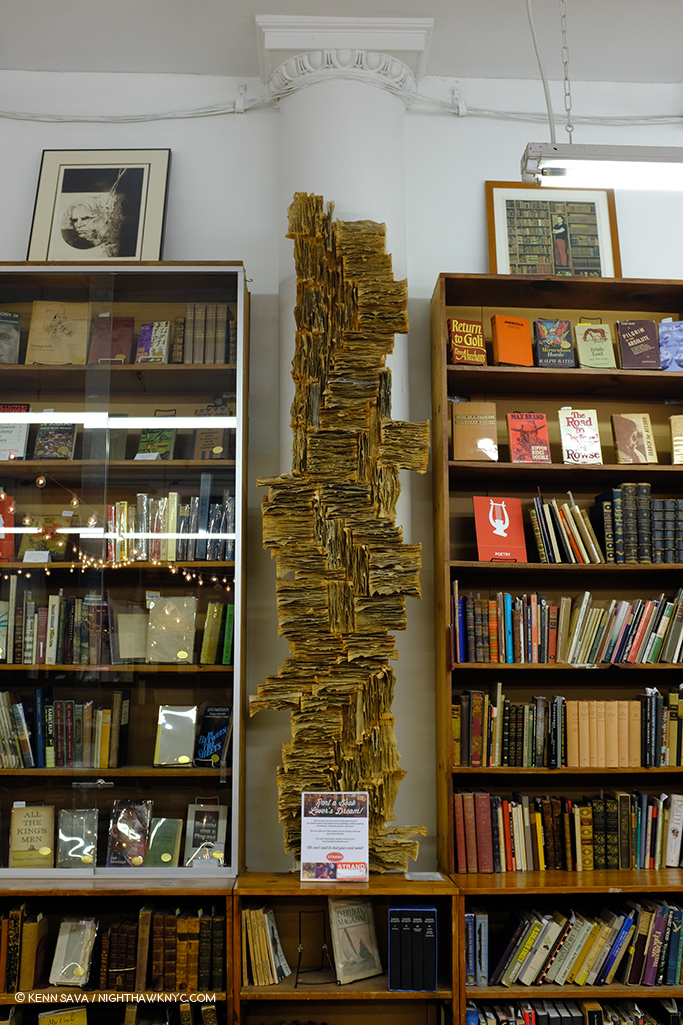
The Rare Book Room at Strand Bookstore. How many books released this year will end up here?
Ok. With all of that out of the way, here they are, listed in no particular order, in a special edition of my regular BookMarks feature. (First, a special note-If you like what you find on NighthawkNYC, I hope you’ll consider supporting it so that I can continue to spend the countless hours and pay the expenses its taken to keep it going these past 3 years- without running ads. If you would like to, you can make a donation through PayPal by clicking on the box to the right of the banner at the top of the page that will take you to the Donation button. Your support is VERY much appreciated.)
***NoteWorthy PhotoBooks, 2018***
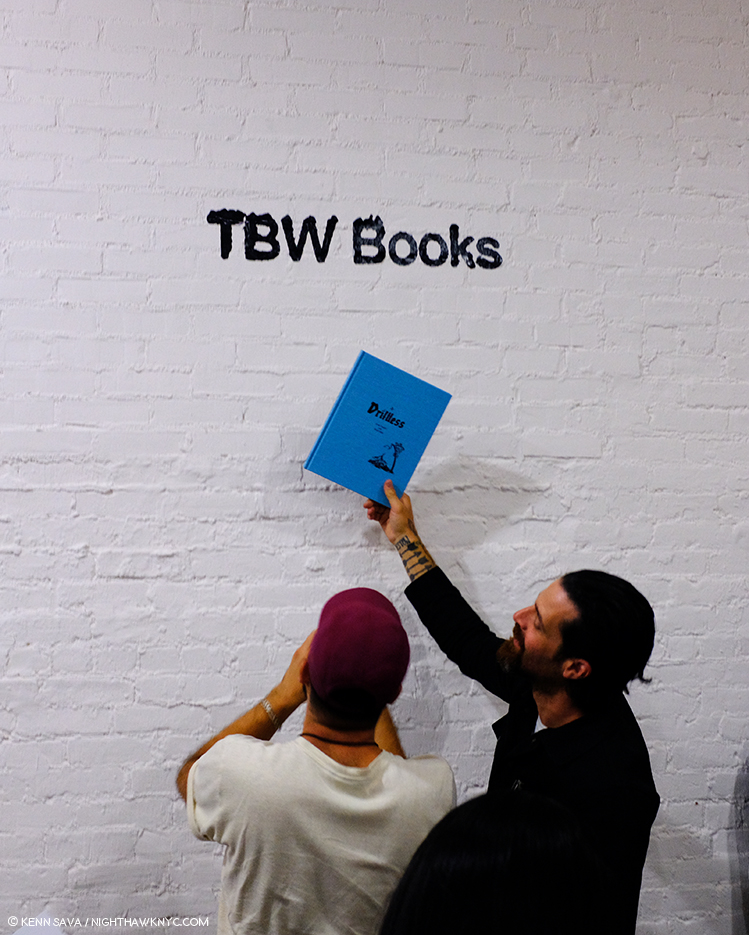
How do they do it? Teamwork. Lester Rosso, left with Paul Schiek, the creative masterminds behind TBW Books, and in front of their sign, reveal one of the secrets of their magic that, it seems to me, a number of others are now trying to emulate. Good Luck with that! Their secret? They consistently make excellent books with top Artists. NYABF, September 21, 2018.
-Gregory Halpern, Confederate Moons with Jason Fulford’s Clayton’s Ascent, Viviane Sassen’s Heliotrope and Guido Guidi’s Dietro Casa, part of TBW’s excellent Annual Series 6. If I were to recommend one new book this year, Gregory Halpern’s would be it. When I look at it, I see a frozen moment in life in America, 2017, seen in the shadows of the solar eclipse, an instant when nature reminds us that everything we stress out about or fight about pales alongside the power IT holds. My look at Confederate Moons is here.
If I were to recommend one new book this year, Gregory Halpern’s would be it. When I look at it, I see a frozen moment in life in America, 2017, seen in the shadows of the solar eclipse, an instant when nature reminds us that everything we stress out about or fight about pales alongside the power IT holds. My look at Confederate Moons is here.
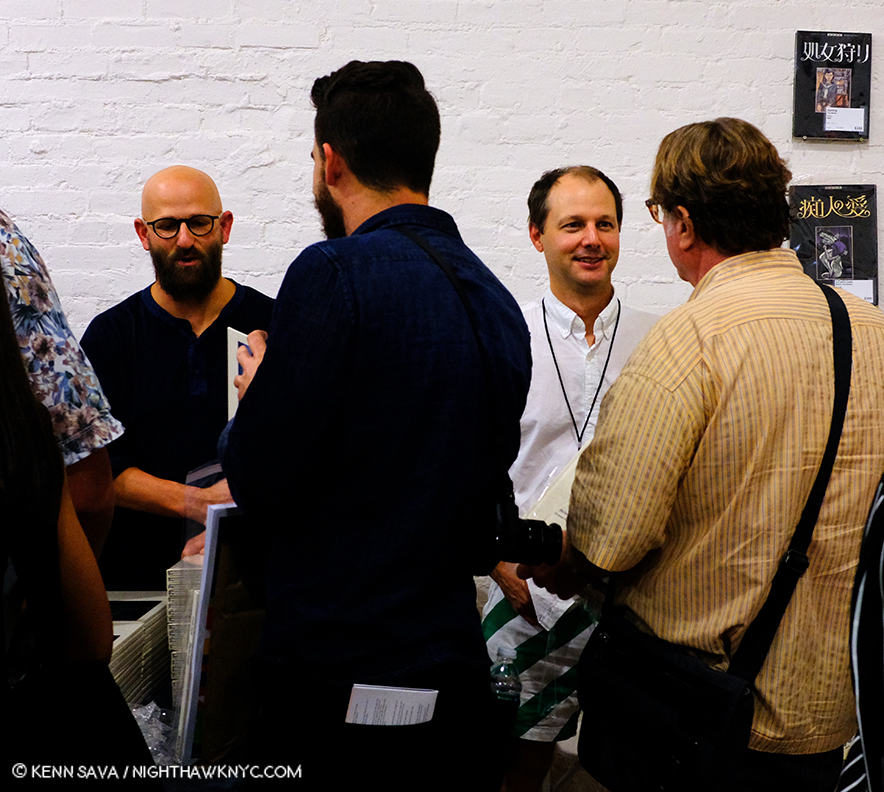
Gregory Halpern, left with the beard and the glasses, and Jason Fulford, right, in the green striped shorts, authored two of the four volumes in this year’s TBW Annual Series here sign them at TBW’s booth, NYABF, September 21, 2018. PhotoBook Business 102- You know you’re doing something right when Artists like these two want to work with you. Mr. Fulford has his own respected publishing house, J&L Books. Mr. Halpern, the 2016 Paris Photo-Aperture PhotoBook of the Year Award Winner, is fresh off his nomination to join Magnum Photos.
–Diane Arbus: A box of ten photographs , Aperture. The only portfolio Diane Arbus produced during her lifetime is beautifully reproduced from the only set in a public collection, which happens to be the only one with 11, not 10, Photographs. This is one of the books that will be essential for anyone interested in Diane Arbus henceforth. Aperture says “it will never be reprinted.” Nuff said.
, Aperture. The only portfolio Diane Arbus produced during her lifetime is beautifully reproduced from the only set in a public collection, which happens to be the only one with 11, not 10, Photographs. This is one of the books that will be essential for anyone interested in Diane Arbus henceforth. Aperture says “it will never be reprinted.” Nuff said.
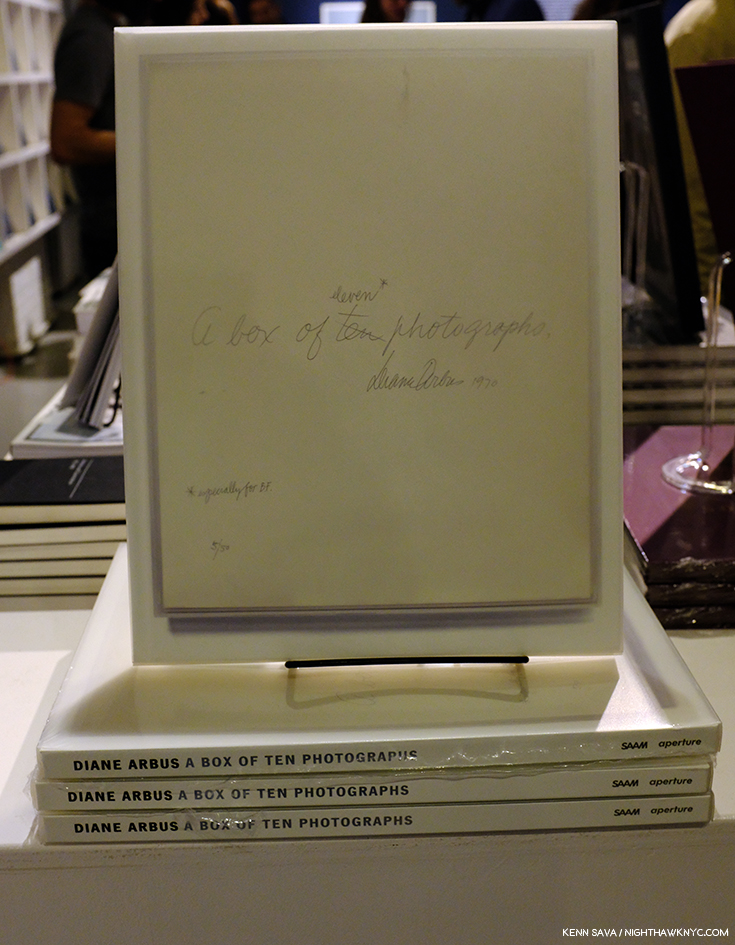
Instant classic. Diane Arbus: A box of 10 photographs. Seen at Aperture Gallery & Bookstore, an NYC Photo mecca.
-Harry Gruyaert, Harry Gruyaert (Retrospective with the red cover), and Harry Gruyaert: East/West
(Retrospective with the red cover), and Harry Gruyaert: East/West both Thames and Hudson- Two books that solidify the Belgian-born Photographer’s place alongside the better-known “early masters of modern & contemporary color Art Photography,” including Eggleston, Stephen Shore, Saul Leiter, et al. (A term that puzzles me since color in fine Art Photography can be traced back to, at least, Sarah Angelina Ackland, circa 1900). More on both books in my recent conversation with Harry Gruyaert, here.
both Thames and Hudson- Two books that solidify the Belgian-born Photographer’s place alongside the better-known “early masters of modern & contemporary color Art Photography,” including Eggleston, Stephen Shore, Saul Leiter, et al. (A term that puzzles me since color in fine Art Photography can be traced back to, at least, Sarah Angelina Ackland, circa 1900). More on both books in my recent conversation with Harry Gruyaert, here.
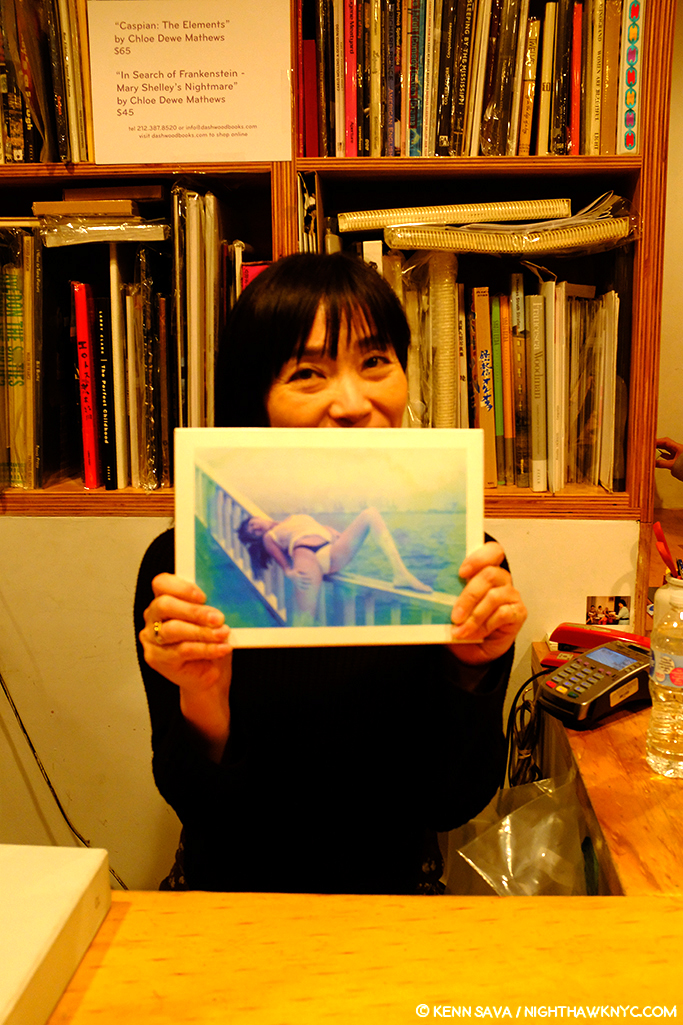
One of the irreplaceable things about physical book stores are its people, like Miwa Susuda of Dashwood Books, seen here. Miwa is, also, a writer and a PhotoBook publisher with her Session Press. In 2017, Session Press and Dashwood Books released the fine Blue Period / Last Summer by the legendary Japanese Photographer, Nobuyoshi Araki, a copy of which she holds. Seen at Dashwood on October 24, 2018.
-Cristina de Middel– The Perfect Man . Cristina de Middel is an Artist who should win an MTV Video Vanguard award. Huh? What I mean is that I can think of no other Photographer who’s books are consistently pushing the boundaries of what a PhotoBook is and can be. This is just the latest in her series of compelling books, most of which are built around subjects that only the most imaginative would say “There’s a PhotoBook in this!” While that certainly wins her major points in my book, if she wasn’t, also, a world class Photographer, she would just be a curiosity. She is. But, you don’t have to take my word for it- Magnum Photos nominated her to join the world’s leading Photographic collective in 2017. The Perfect Man starts with looking at the largest Charlie Chaplin impersonator festival (with many of its subject posed in scenes reminiscent of Mr. Chaplin’s immortal “Modern Times”), and winds up being a broad look at Indian masculinity, and then a look at social customs Indian women are faced with interacting with them. It’s another book that surprises, and another book, like her classic The Afronauts
. Cristina de Middel is an Artist who should win an MTV Video Vanguard award. Huh? What I mean is that I can think of no other Photographer who’s books are consistently pushing the boundaries of what a PhotoBook is and can be. This is just the latest in her series of compelling books, most of which are built around subjects that only the most imaginative would say “There’s a PhotoBook in this!” While that certainly wins her major points in my book, if she wasn’t, also, a world class Photographer, she would just be a curiosity. She is. But, you don’t have to take my word for it- Magnum Photos nominated her to join the world’s leading Photographic collective in 2017. The Perfect Man starts with looking at the largest Charlie Chaplin impersonator festival (with many of its subject posed in scenes reminiscent of Mr. Chaplin’s immortal “Modern Times”), and winds up being a broad look at Indian masculinity, and then a look at social customs Indian women are faced with interacting with them. It’s another book that surprises, and another book, like her classic The Afronauts , that shows the new and old worlds colliding at full speed in unexpected ways.
, that shows the new and old worlds colliding at full speed in unexpected ways.
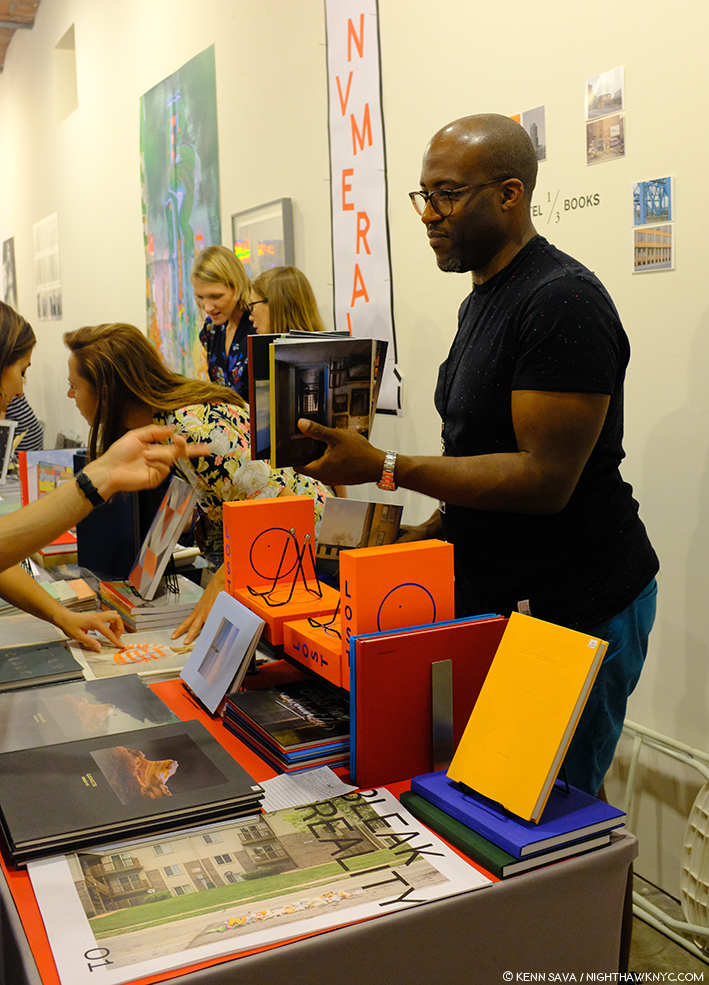
Kris Graves holding the contents of LOST, which comes as a set in the spiffy orange box with blue lettering under his hand at his +Kris Graves Projects booth at the NYABF, September 22, 2018. His newly released A Bleak Reality is seen in the foreground.
-Kris Graves, et al, LOST +Kris Graves Projects. A ground-breaking (sorry!) work in a number of ways. First, it’s a daring, TEN volume box set by a smaller publisher featuring the work of a number of established Artists (including Lois Conner and Lynn Saville) along side that of others who are on the way up (like Zora J. Murff, Joseph P. Traina and Owen Conway), each contributing a PhotoBook on a different city around the world. Second, typically for +KGP, the cost is quite reasonable, for both the individual books or the set. And last, taken as a whole it’s a stunning example of what a well-run, Artist-run publishing house can achieve. Did I mention that each component book stands, and stands out, on its own? Also in 2018, A Bleak Reality by Kris Graves from +KGP is a powerful look at 8 sites where young black men were murdered by police officers, a collection of his work that first brought Kris to my attention at AIPAD this past April, as I wrote about here.
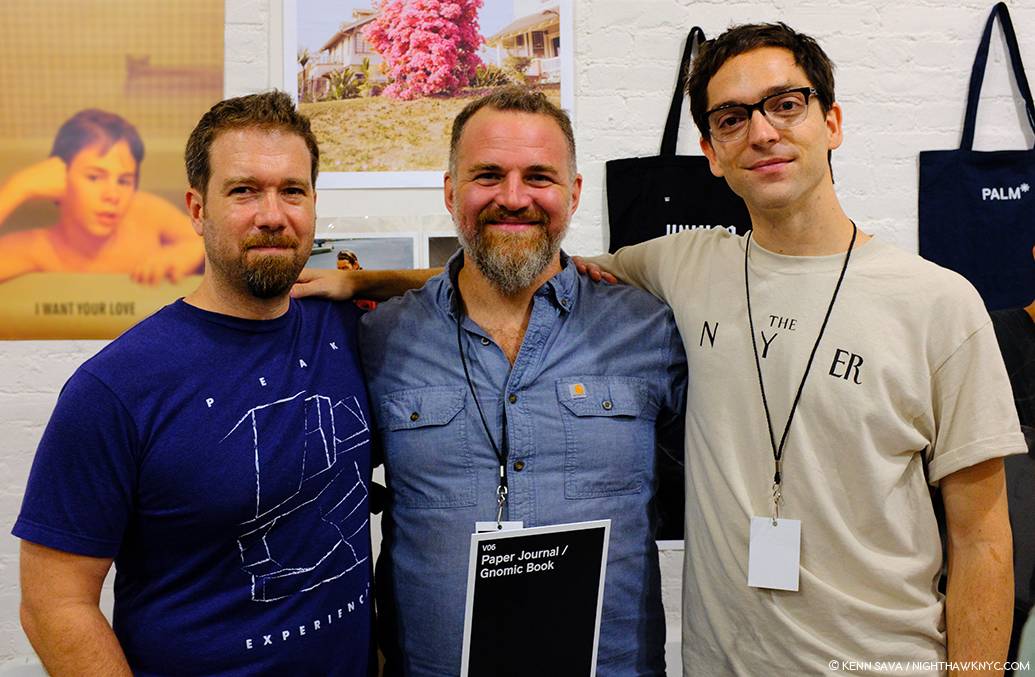
Multi-talented Artist & Gnomic Book publisher, Jason Koxvold, center, with Gnomic Book Artists Shane Rocheleau, left, and Romke Hoogwaerts, right at the Gnomic Book booth at the NYABF, September 22, 2018.
-Shane Rocheleau, You are Masters of the Fish and Birds and All the Animals (or, YAMOTFABAATA as it reads on its spine), Gnomic Book. A book that looks at the legacy of being white and male in America, quickly expands in scope to include any number of related effects, artifacts and institutions. It also reveals that the words “think small” apparently do not exist in Mr. Rocheleau’s vocabulary. The results are a first PhotoBook that’s extremely ambitious in its scope, biblical in its effect, gorgeously shot with a magical combination of subtlety and abstraction, edited like a Stanley Kubrick film, and exquisitely produced down to the smallest detail- (like its beautiful, hypnotic, and seductive to the touch, cover)…Phew! Along the way, it’s also chock full of indelible images that combine to make it linger and linger on in the mind later. A remarkable achievement, particularly for a first PhotoBook- the only first PhotoBook in this Noteworthy PhotoBooks, 2018 section. Limited edition of 500 copies. My recent Q&A with Shane Rocheleau is here.
(or, YAMOTFABAATA as it reads on its spine), Gnomic Book. A book that looks at the legacy of being white and male in America, quickly expands in scope to include any number of related effects, artifacts and institutions. It also reveals that the words “think small” apparently do not exist in Mr. Rocheleau’s vocabulary. The results are a first PhotoBook that’s extremely ambitious in its scope, biblical in its effect, gorgeously shot with a magical combination of subtlety and abstraction, edited like a Stanley Kubrick film, and exquisitely produced down to the smallest detail- (like its beautiful, hypnotic, and seductive to the touch, cover)…Phew! Along the way, it’s also chock full of indelible images that combine to make it linger and linger on in the mind later. A remarkable achievement, particularly for a first PhotoBook- the only first PhotoBook in this Noteworthy PhotoBooks, 2018 section. Limited edition of 500 copies. My recent Q&A with Shane Rocheleau is here.
Rosalind Fox Solomon, Liberty Theater, MACK. Something of a marvel, another entry in this Post of a book that consists of a body of work decades in the making, this one is special. Culled from 400 Photographs taken in the 1970s, 80s and 90s, across the south, these 77 show a wide range of glimpses into the complex issues of race and racism, class and gender divisions that could be pivotal moments from 77 films that each stand on their own while provoking a world of feelings and reactions. Except comfort. The title speaks to a performance, and her website says the images are “poised between act and reenactment…” Now 88, Rosalind Fox Solomon, who like Diane Arbus, studied with Lisette Model in the 1970s, shares something of Ms. Arbus’ mystery and power in images that demand repeat viewing, here, in a tightly edited volume that quietly stuns as often as it shocks, aided by yet another powerful essay by Stanley Wolukau-Wanambwa, who’s first PhotoBook also appears on this list.
***Noteworthy First PhotoBooks***
–Shahrzad Darafsheh- Half-Light, Gnomic Book. Iranian Photographer Shahrzad Darafsheh was diagnosed with cancer at age 36. But? She hasn’t let it stop her creativity or her work! It seems to me that anyone who’s been through cancer, or knows someone who has, can relate to her new first PhotoBook, Half-Light. It’s, at once both intimately personal, and universal, a book that looks inwards and outwards at the same time. Designed to be read either in western style left to right, or right to left, the custom in Farsi, one time I went through it it felt like an out of body experience. Cancer changes your life- forever, and it also changes how you see life, forever. Here is a Photographic record of the early days of this very talented young Artist’s cancer experience, seeing the world anew and turning her lens on herself, and her surroundings with wondering eyes. Its 300 copies are far too few to reach the audience this book deserves, so don’t wait long. It’s somewhat miraculous that Gnomic’s Jason Koxvold somehow found this work and overcame all the layers of problems inherent in working with an Artist living in Iran to produce such a beautiful and important book.
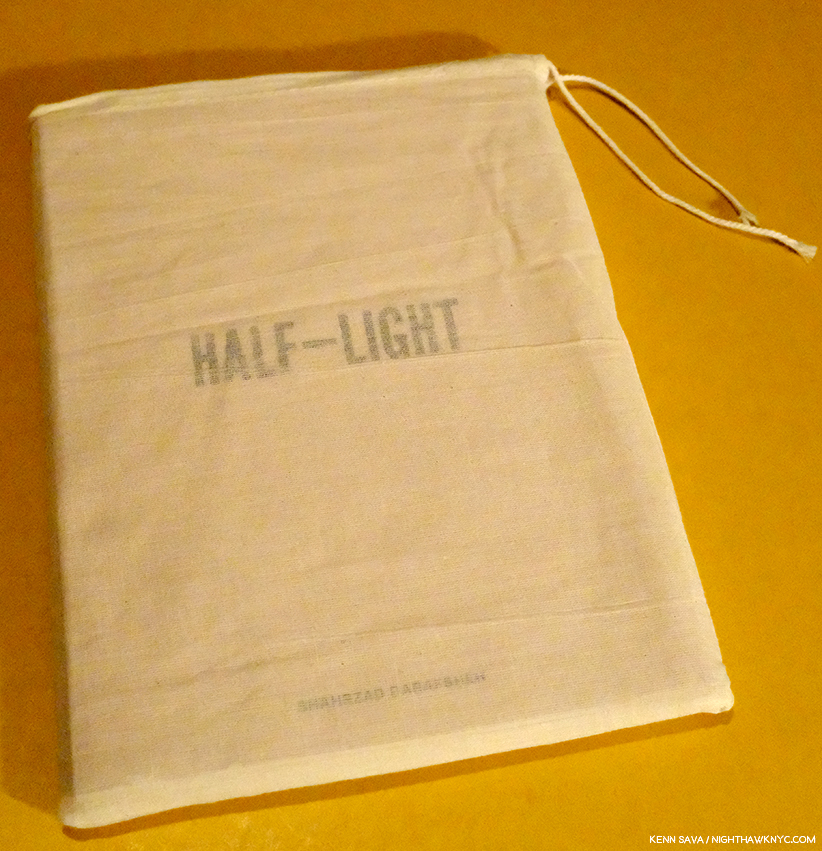
Shahrzad Darafsheh’s Half-Light.
-Stanley Wolukau-Wanambwa – One Wall A Web . Stanley Wolukau-Wanambwa has been one of the most astute and urgent voices writing about Photography and PhotoBooks for some time now. His writing has appeared in a wide range of places, including in a number of PhotoBooks, like Jason Koxvold’s excellent Knives. With One Wall a Web the world gets to see his first collection of his Photographic work. Born in Uganda and living here for a number of years, One Wall is a far ranging look at American life, culture and society with a focus on the black reality in this country in two sets of original Photographs surrounding a section of appropriated vintage archival Photographs. It’s so wide-ranging it even masterfully weaves Allen Ginsberg’s classic poem Howl in. It’s already clear to me that One Wall a Web is one of those books that define this moment, as his friend’s Shane Rocheleau’s does in its way. It’s a book people will be discussing, referring to and looking at for many years to come. As I write this, about 70 copies remain of the first edition.
. Stanley Wolukau-Wanambwa has been one of the most astute and urgent voices writing about Photography and PhotoBooks for some time now. His writing has appeared in a wide range of places, including in a number of PhotoBooks, like Jason Koxvold’s excellent Knives. With One Wall a Web the world gets to see his first collection of his Photographic work. Born in Uganda and living here for a number of years, One Wall is a far ranging look at American life, culture and society with a focus on the black reality in this country in two sets of original Photographs surrounding a section of appropriated vintage archival Photographs. It’s so wide-ranging it even masterfully weaves Allen Ginsberg’s classic poem Howl in. It’s already clear to me that One Wall a Web is one of those books that define this moment, as his friend’s Shane Rocheleau’s does in its way. It’s a book people will be discussing, referring to and looking at for many years to come. As I write this, about 70 copies remain of the first edition.
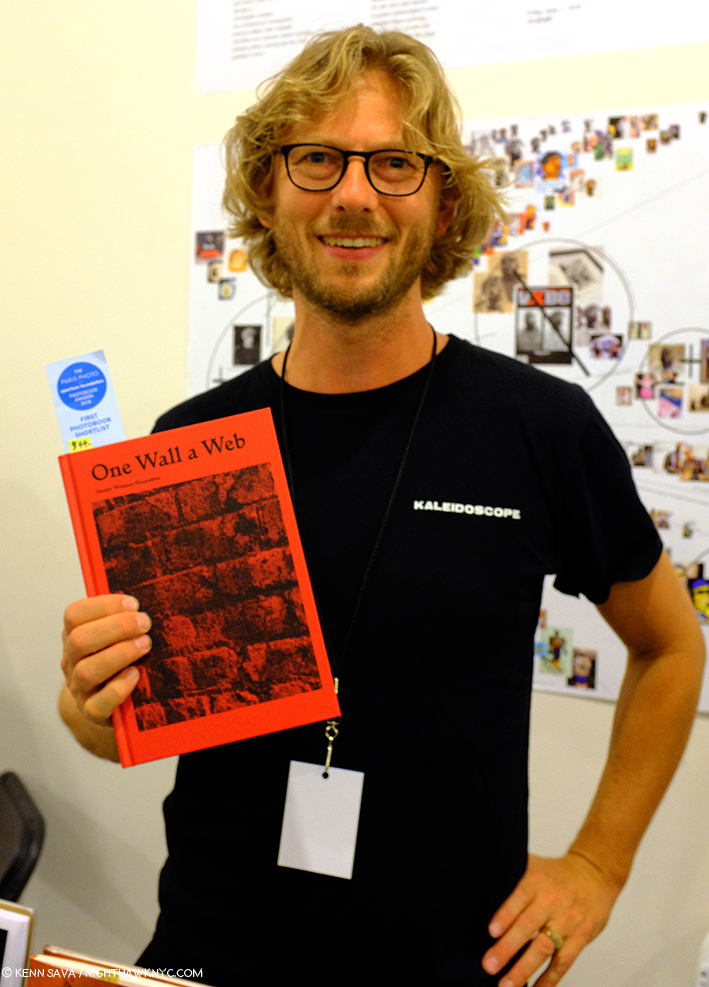
Roma Publications co-founder Roger Willems holds a copy of One Wall a Web, by Stanley Wolukau-Wanambwa at Roma’s booth at the NYABF, September 22, 2018.
-Jo Ann Walters- Wood River Blue Pool , ITI Ithaca Named after a river and a pool near her hometown of Alton, Illinois, a journey through its 120 pages it makes it quickly apparent that yes, still waters run deep. A book over 30 years in the making, it’s a veritable time capsule of people and places, seen with a strong and singular eye, here largely cast on women and girls around her hometown, and elsewhere from Minnestoa to Mississippi cry out for extended pondering- on the women and/or children depicted, their situations and surroundings, and the moment. Coincidentally, Ms. Walters also teaches at Purchase College on the same Photography faculty with Stanley Wolukau-Wanambwa. My thanks to Kris Graves for making me aware of this book. He did so purely on the book’s exceptional merit as something I should see. Modestly, he did so without mentioning that he was once one of her students, which I found out later. Jo Ann Walters’ tree has many branches. Now? We finally get to sit under another one with wonder at her achievement. I’ve found it makes an interesting pairing with the following-
, ITI Ithaca Named after a river and a pool near her hometown of Alton, Illinois, a journey through its 120 pages it makes it quickly apparent that yes, still waters run deep. A book over 30 years in the making, it’s a veritable time capsule of people and places, seen with a strong and singular eye, here largely cast on women and girls around her hometown, and elsewhere from Minnestoa to Mississippi cry out for extended pondering- on the women and/or children depicted, their situations and surroundings, and the moment. Coincidentally, Ms. Walters also teaches at Purchase College on the same Photography faculty with Stanley Wolukau-Wanambwa. My thanks to Kris Graves for making me aware of this book. He did so purely on the book’s exceptional merit as something I should see. Modestly, he did so without mentioning that he was once one of her students, which I found out later. Jo Ann Walters’ tree has many branches. Now? We finally get to sit under another one with wonder at her achievement. I’ve found it makes an interesting pairing with the following-
-Petra Collins- Coming of Age , Rizzoli. A minor sensation when it was released, causing first printing copies to instantly vaporize, surprising no one more than its publisher, Rizzoli, who scrambled to produce a second printing, which finally materialized after a few months absence. Coming of Age, (a perfect title in more ways than one), touched a nerve with its subject generation, and with the esteemed Artist, Marilyn Minter, who interviews Ms. Collins inside. It’s easy to see why. Petra Collins Photographs her subjects the way they would like to be seen, and shows sides of them and their lives the rest of us never see. While other Photographers have garnered more attention for more contrived work in this genre, Petra Collins is the one to watch, in my view.
, Rizzoli. A minor sensation when it was released, causing first printing copies to instantly vaporize, surprising no one more than its publisher, Rizzoli, who scrambled to produce a second printing, which finally materialized after a few months absence. Coming of Age, (a perfect title in more ways than one), touched a nerve with its subject generation, and with the esteemed Artist, Marilyn Minter, who interviews Ms. Collins inside. It’s easy to see why. Petra Collins Photographs her subjects the way they would like to be seen, and shows sides of them and their lives the rest of us never see. While other Photographers have garnered more attention for more contrived work in this genre, Petra Collins is the one to watch, in my view.
-Rose Marie Cromwell, El Libro Supremo de la Suerte, TIS Books/LightWork. I lived in Miami and South Florida, where it’s impossible to escape the flavor and influence of nearby Cuba. Here’s, an amazing look at the real thing, shot over 8 years while the Artist lived in Havana. It’s a thunderbolt, filled with color, as you’d expect, but it’s also full of a poignant intimacy that surprises. Another book with an instant buzz that saw copies flying out the door, and a long line for signed examples at TIS’ Booth at the NYABF. El Libro Supreme de la Suerte (The Supreme Book of Luck) supremely deserves it.
If you are able to pick only one book from that group? You are a better man or woman than I am.
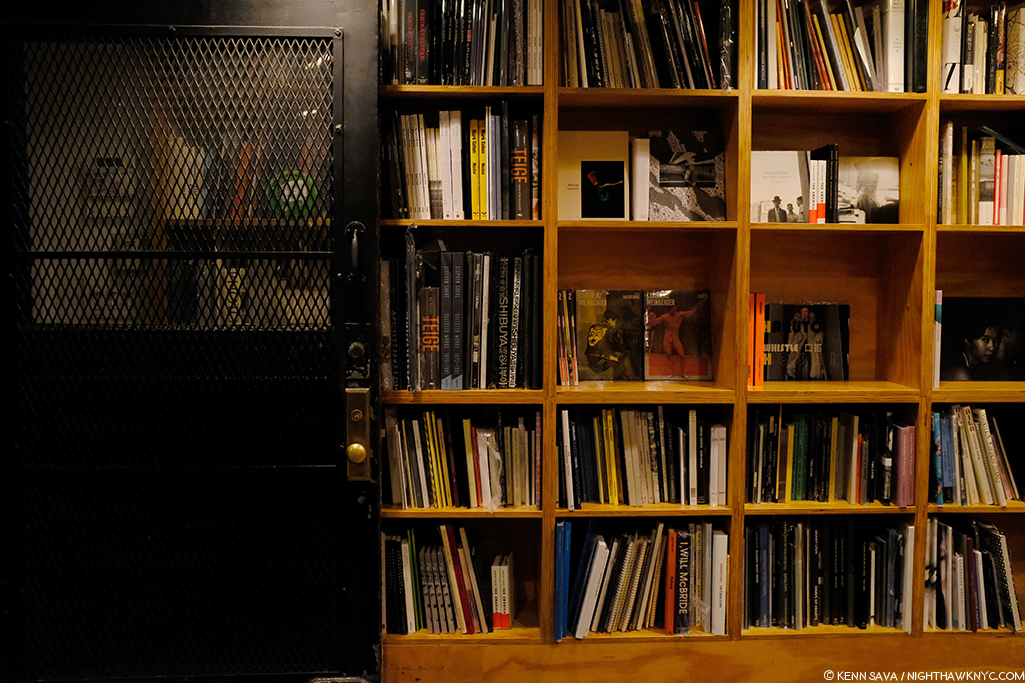
PhotoBooks are all we sell! One wall of titles at Dashwood Books.
***NoteWorthy Photo Related Book without Photos***
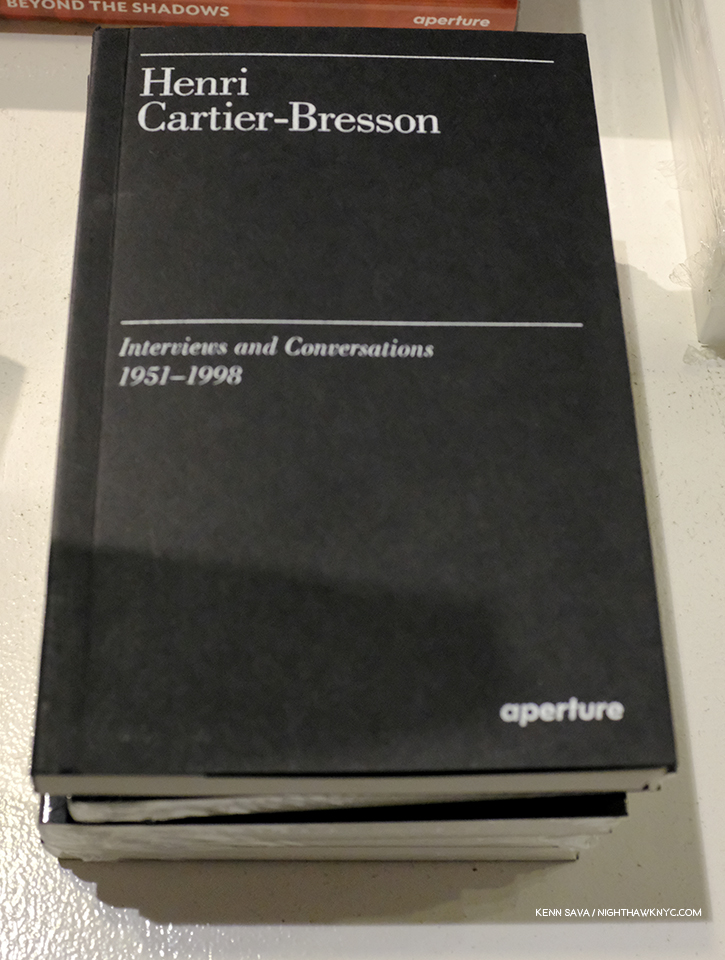
In this “decisive moment,” the foreshortening got the better of my auto-focus.
-Henri Cartier-Bresson- Interviews and Conversations, 1951-98 , Aperture. I picked up The Mind’s Eye
, Aperture. I picked up The Mind’s Eye , Cartier-Bresson’s writings on Photography and Photographers, which didn’t have the insights I was looking for. Interviews and Conversations does. On every single page. Essential. A reference book for the ages.
, Cartier-Bresson’s writings on Photography and Photographers, which didn’t have the insights I was looking for. Interviews and Conversations does. On every single page. Essential. A reference book for the ages.
***NoteWorthy Reissues***
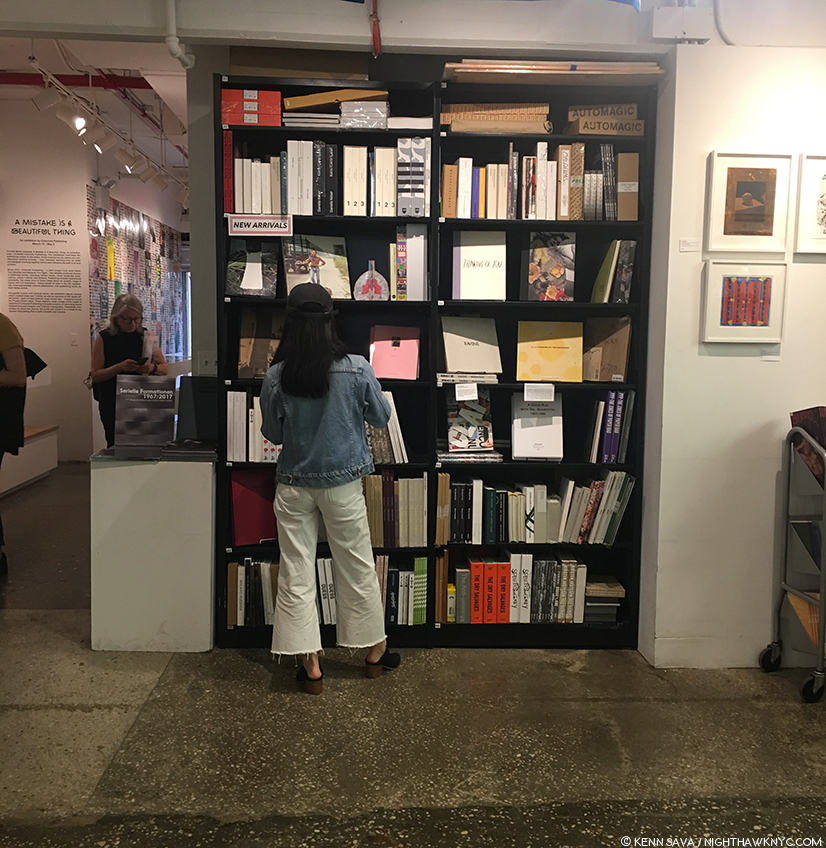
The New Arrivals wall at Printed Matter, presenters of the New York Art Book Fair. An amazing store that contains multitudes of worlds in the form of Artist’s books by umpteen thousand Artists and Writers. How do they know where all of them are? I never bother to try to find something- I just ask. Extra credit if you can spot the next book to appear on this list.
-Masahisa Fukase Ravens , MACK. (Pictured almost smack dab in the middle, above, in its grey slip case). Believe the hype. Shot in the aftermath of a divorce, this is an unforgettable masterpiece, one of the great achievements in PhotoBook history in my view. It says 2017 inside. I don’t care. I’m listing it here as a public service announcement. After being first published in 1986, it was out of print for the better part of 30 years! The word is copies are running low. Get it before it goes out of print. Again. I’m listing Ravens, also, to acknowledge MACK’s excellent series of reissues that has seen Alec Soth’s classic Sleeping By The Mississippi and Niagara, among a number of others reissued, making them affordable to students and Photography lovers, again, after long absences that has made them available only at very high prices on the rare book market. Bravo! The next selection is another one…
, MACK. (Pictured almost smack dab in the middle, above, in its grey slip case). Believe the hype. Shot in the aftermath of a divorce, this is an unforgettable masterpiece, one of the great achievements in PhotoBook history in my view. It says 2017 inside. I don’t care. I’m listing it here as a public service announcement. After being first published in 1986, it was out of print for the better part of 30 years! The word is copies are running low. Get it before it goes out of print. Again. I’m listing Ravens, also, to acknowledge MACK’s excellent series of reissues that has seen Alec Soth’s classic Sleeping By The Mississippi and Niagara, among a number of others reissued, making them affordable to students and Photography lovers, again, after long absences that has made them available only at very high prices on the rare book market. Bravo! The next selection is another one…
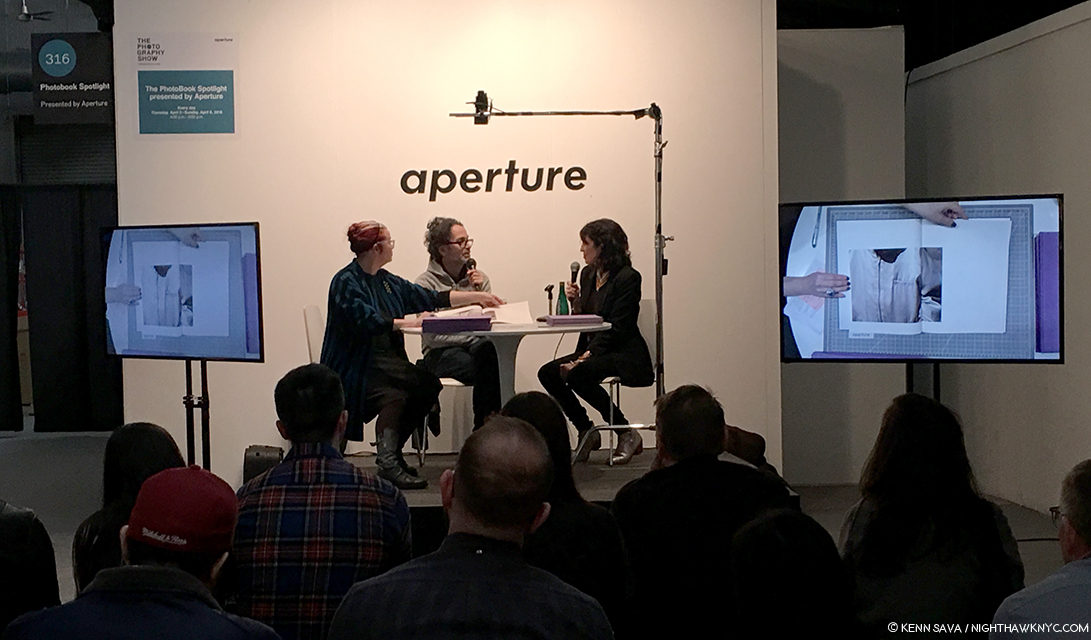
Paul Graham, center, with Lesley A. Martin of Aperture, left, discuss a shimmer of possibility at its re-release. AIPAD, April 13, 2018.
-Paul Graham, a shimmer of possibility , MACK. Though reissued once before, as a one volume paperback, MACK has finally released the book Paris Photo-Aperture gave their “The Best PhotoBook of the Last 15 Years” award to in 2012, in its original 12 volume format (which sold out in less than 3 months in 2012). A revolution when it was first released, its influenced countless books that have come since. Including a few on this list. Limited edition of 500 hand signed sets.
, MACK. Though reissued once before, as a one volume paperback, MACK has finally released the book Paris Photo-Aperture gave their “The Best PhotoBook of the Last 15 Years” award to in 2012, in its original 12 volume format (which sold out in less than 3 months in 2012). A revolution when it was first released, its influenced countless books that have come since. Including a few on this list. Limited edition of 500 hand signed sets.
-Daido Moriyama: Record , Thames & Hudson, A selection from Nos 1-30, beginning in June 1972 of the magazine, Record, that the great Japanese Photographer continues to release to this very day. At age 80, he’s now up to No. 39. When I added them up, Numbers 1-30 would cost a thousand or so dollars, IF you could find them all. This beautiful selection from them sells for about 50.00, and is sure to bring many more eyes to the work of one of the most admired, and influential, living masters of Street Photography.
, Thames & Hudson, A selection from Nos 1-30, beginning in June 1972 of the magazine, Record, that the great Japanese Photographer continues to release to this very day. At age 80, he’s now up to No. 39. When I added them up, Numbers 1-30 would cost a thousand or so dollars, IF you could find them all. This beautiful selection from them sells for about 50.00, and is sure to bring many more eyes to the work of one of the most admired, and influential, living masters of Street Photography.
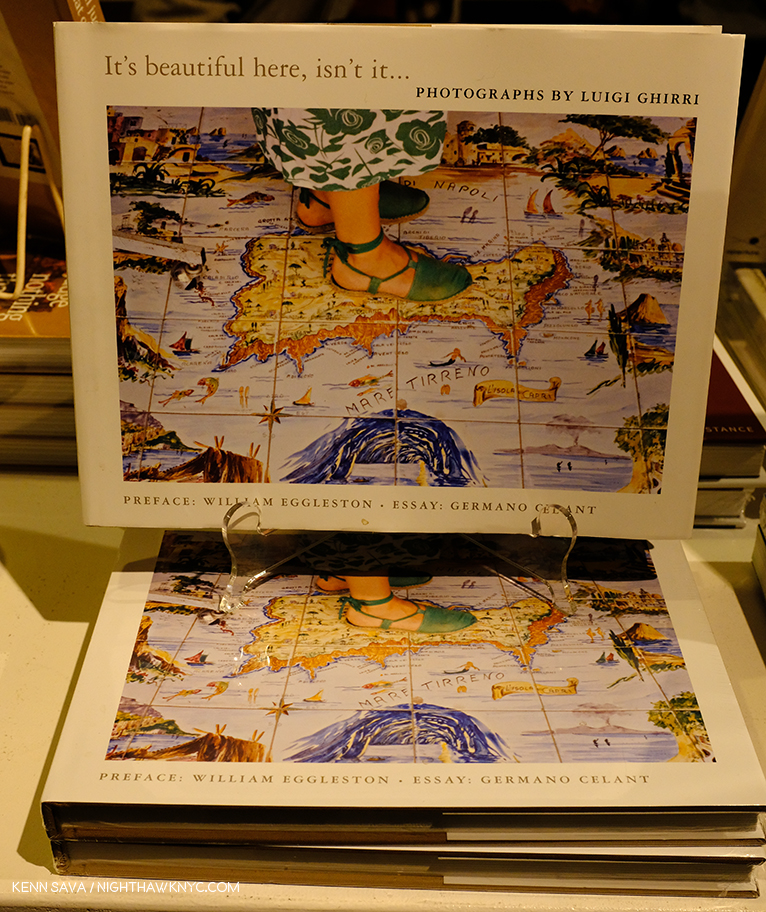
-Luigi Ghirri- It’s Beautiful Here, Isn’t It… Aperture. With 2008 1st Printings selling for over 300.00 per, my thanks to Aperture for issuing a 2nd printing this year otherwise I would have never seen it! Ghirri’s Kodachrome
Aperture. With 2008 1st Printings selling for over 300.00 per, my thanks to Aperture for issuing a 2nd printing this year otherwise I would have never seen it! Ghirri’s Kodachrome is the place to start exploring his work (especially in MACK’s gorgeous reissue, which seems to be disappearing), but this is a very nice selection of works from throughout his career. Intro by William Eggleston.
is the place to start exploring his work (especially in MACK’s gorgeous reissue, which seems to be disappearing), but this is a very nice selection of works from throughout his career. Intro by William Eggleston.
Roy DeCarava & Langston Hughes- Sweet Flypaper of Life, First Print Press/David Zwirner Books. Roy DeCarava is one of the unsung masters of contemporary Photography, who is quietly undergoing a renaissance that’s seen a few of his books reissued at long last in honor of the Photographer’s 100th birthday in 2019. First published in 1955, it features 141 DeCarava Photographs chosen by Langston Hughes who then supplied an accompanying narrative. His aim, he said, “We have so many books about how bad life is. Maybe it’s time to have one showing how good it is.” It’s that, and more, as it shows life “Uptown” in the mid-1950s in a way unlike that seen in any other book.
***NoteWorthy Catalog of the Year**
-Sally Mann- A Thousand Crossings . It’s going to be a while before another book coming along surpassing this as a one volume reference/summary/monograph of Ms. Mann’s work to date. Beautiful. Throughout.
. It’s going to be a while before another book coming along surpassing this as a one volume reference/summary/monograph of Ms. Mann’s work to date. Beautiful. Throughout.
-Saul Leiter- All About Saul Leiter – It came out in Japan last year, and has just been released here. I’d still recommend Early Color
– It came out in Japan last year, and has just been released here. I’d still recommend Early Color as the place to start exploring Saul Leiter, but this is an excellent second choice and provides more of a complete sense of the man’s work over his career. With all due respect to his black & white work- Saul Leiter is a supreme Photographic Artist with color and the effects of light, and that is the work of his I will always be drawn to, and there’s a lot of it in this beautiful volume. My look at the recent Saul Leiter: In My Room show and book is here.
as the place to start exploring Saul Leiter, but this is an excellent second choice and provides more of a complete sense of the man’s work over his career. With all due respect to his black & white work- Saul Leiter is a supreme Photographic Artist with color and the effects of light, and that is the work of his I will always be drawn to, and there’s a lot of it in this beautiful volume. My look at the recent Saul Leiter: In My Room show and book is here.
-Luigi Ghirri- The Map and the Territory , MACK. Focused on his work from 1970s and 1980s this is a beautiful almost 400 page look at a visionary Photographer, who, was the only name Stephen Shore mentioned when I asked who he felt deserved more attention. He told me Luigi Ghirri was the Artist he used to recommend, before the internet did away with little known Artists. Which brings me to…
, MACK. Focused on his work from 1970s and 1980s this is a beautiful almost 400 page look at a visionary Photographer, who, was the only name Stephen Shore mentioned when I asked who he felt deserved more attention. He told me Luigi Ghirri was the Artist he used to recommend, before the internet did away with little known Artists. Which brings me to…
***NoteWorthy “Non-PhotoBook” of the Year/ Holiday gift of the Year***
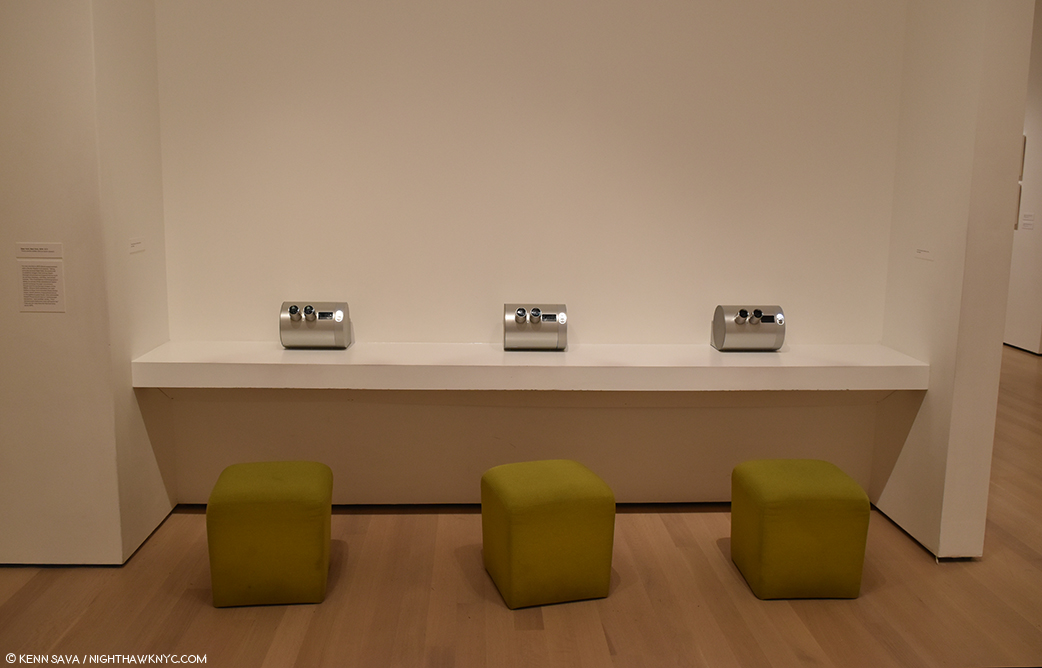
The 3 Stereograph viewing stations, each containing 10 different stereo Photographs of New York, 1974, at the Stephen Shore Retrospective at MoMA, May 23, 2018.
–Stephen Shore, Stereographs, New York, 1974, Aperture. Hey, it counts- its got an ISBN number…and 30 Stereo Photographs! I don’t know how many other visitors to the Stephen Shore Retrospective at MoMA were thinking, “Wow. This is COOL!,” when they sat at one of the 3 stations, each containing 10 of Mr. Shore’s Stereographic Photographs. Well, I was. Now, you can have your own! Hurry. Aperture only produced 400 sets each containing a “Stephen Shore” signature model viewer (cool!) and all 30 of the works seen at MoMA (ditto). Each set includes a card hand signed by Mr. Shore. Don’t sleep on it. I hear they’re going fast. All of those who already own it that I’ve spoken with said they hoped more images would be made available. Hear, hear. My piece on the monumental Stephen Shore Retrospective at MoMA is here.
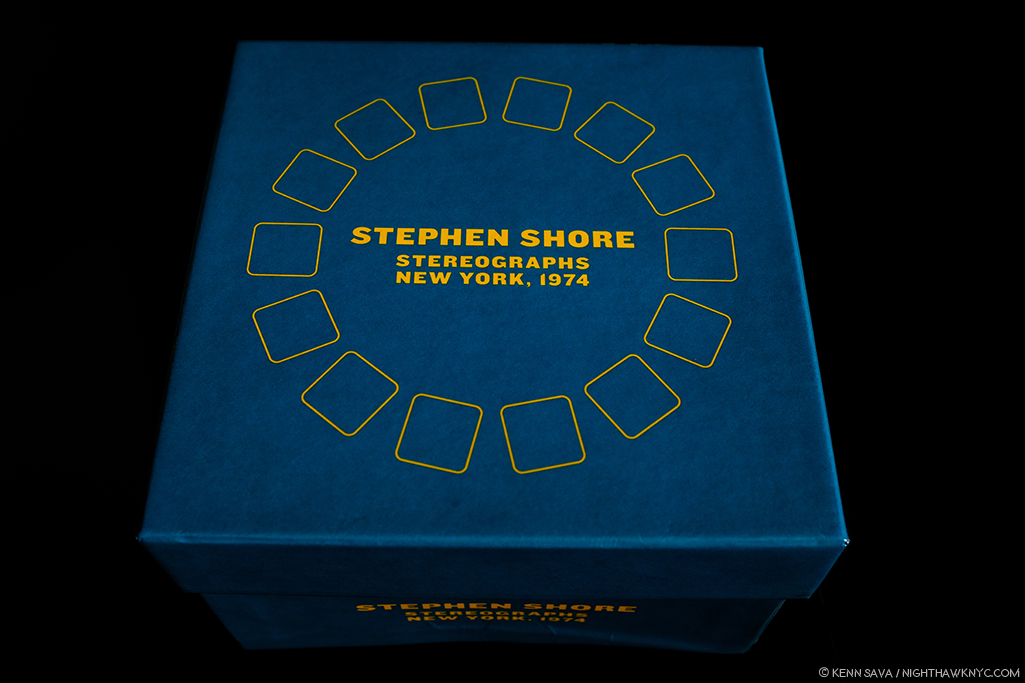
Stephen Shore: Stereographs, New York, 1974, published by Aperture.
***PhotoBook Discovery of the Year (Regardless of Publication Date)***
-Lewis Baltz, WORKS , Steidl, 2010. WORKS is THE most extraordinary box set I have yet seen. Period.
, Steidl, 2010. WORKS is THE most extraordinary box set I have yet seen. Period.
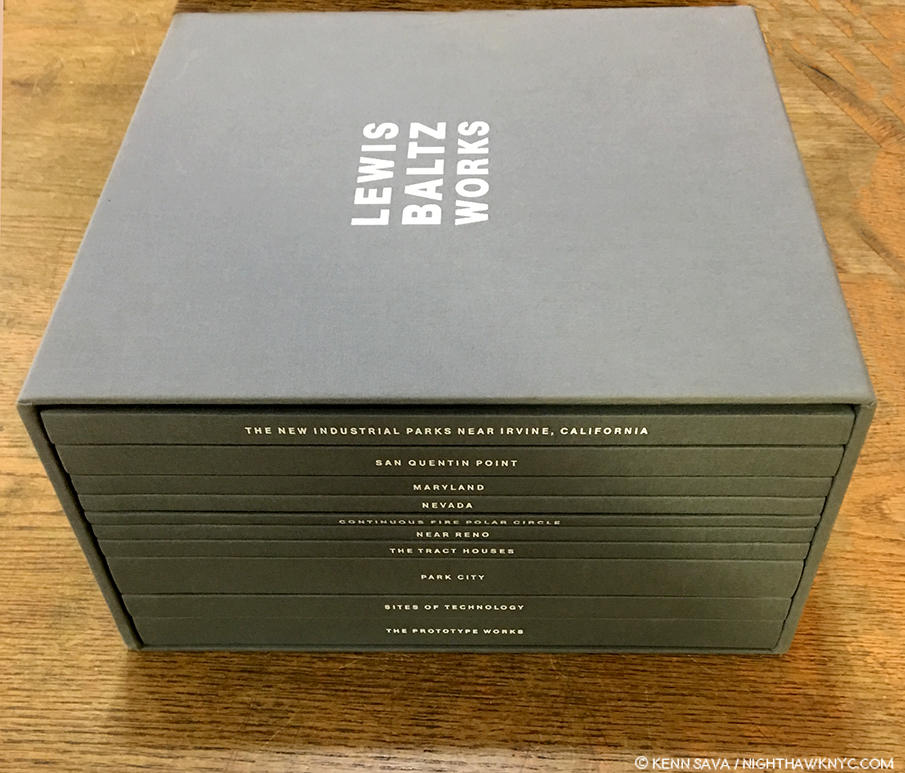
When you look at it like this, it could have been called “MONUMENT.” Note- There are two editions of WORKS. Mine is the first edition, 2010. the later WORKS- Last Edition edition adds the subsequent Candlestick Point (2011) and Texts (2013), which they just lay on top of this box. Both of those books are available separately, so you can create your own Last Edition. Their Last Edition also comes with a booklet containing Lewis Baltz’ Last Interview, which, unfortunately, is not available elsewhere.
Since discovering WORKS, Lewis Baltz has become one of the few Artists who have effected the way I see the world, and one of even fewer to effect how I think about what I see. Mr. Baltz passed away in 2014 at 69 and this was a project he worked on when he, apparently, knew the end was coming. The result is that WORKS is the complete 10 volume edition of his Photography as the Artist wanted it to be seen. The care and attention to detail he brought to this edition, matched by Gerhard Steidl and his team, make it the definition of “definitive.” It houses the career work of an Artist who’s work expanded from the so-called “New Topographic” approach to Photography to including how the forces that control man’s uses of the land have extended into virtually every realm of human life. Inside, the entire journey can be taken in one place, where its continuity and interconnectedness can be fully appreciated as it can be nowhere else, in drop-dead beautiful quality printing. Lewis Baltz was an Artist who while producing Art based in what he saw around him created a body of work that, also, warns about where this was (and is) all heading. In my view, this makes him one of the most important Photographers of our time. Each of the 1,000 copies is hand signed by the Artist!
For those not wanting to make the investment in WORKS (currently 600.00 and up), there is the one volume Lewis Baltz – the catalog published in 2017 to accompany the first posthumous retrospective of Mr. Baltz’ work in Madrid, and so another entry for NoteWorthy Catalog, 2018. (It reached me in January, 2018.) The best one volume survey of his work is a great way to get the feel of both his accomplishment and the interconnectedness of the various series he produced, (and yes, they are interrelated). Even more than A Thousand Crossings, it’s very hard for me to see another book surpassing Lewis Baltz as a one volume monograph, especially given its particularly beautiful Steidl production and superb essays by Urs Stahel and, particularly, Artist Walead Beshty.
– the catalog published in 2017 to accompany the first posthumous retrospective of Mr. Baltz’ work in Madrid, and so another entry for NoteWorthy Catalog, 2018. (It reached me in January, 2018.) The best one volume survey of his work is a great way to get the feel of both his accomplishment and the interconnectedness of the various series he produced, (and yes, they are interrelated). Even more than A Thousand Crossings, it’s very hard for me to see another book surpassing Lewis Baltz as a one volume monograph, especially given its particularly beautiful Steidl production and superb essays by Urs Stahel and, particularly, Artist Walead Beshty.
And so, in my book, there are no “winners,” no “losers” among Artists. ALL Artists who have created a PhotoBook (since that’s what we’re talking about here) this year are Winners in my book! CONGRATULATIONS! Seeing so many books and speaking with so many Artists & publishers has given me a real sense of how hard it is to produce a book today, particularly in this country.
For the rest of us? Get out there, look at some PhotoBooks and see what speaks to you. For me? I look forward to seeing what’s coming next. And? I will be looking for it…
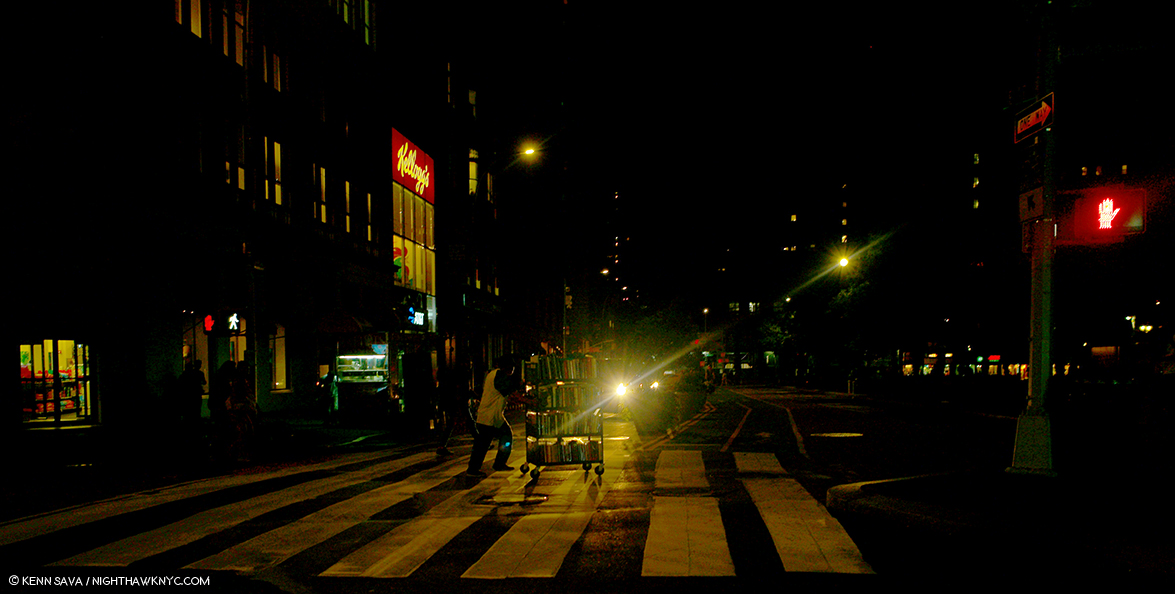
11pm, East 17th Street @ Union Square. It can be a lonely road seeking PhotoBooks in the dead of night, which I actually was. But, wait! “Hey, man. Got any PhotoBooks there I should know about?”
*-Soundtrack for this Post is Impossible Year by Panic! at the Disco from Death of a Bachelor.
My previous pieces on Photography are here.
NighthawkNYC.com has been entirely self-funded and ad-free for over 6 years, during which over 250 full length pieces have been published. If you’ve found it worthwhile, you can donate to keep it going & ad-free below. Thank you!
Written & photographed by Kenn Sava for nighthawknyc.com unless otherwise credited.
To send comments, thoughts, feedback or propositions click here.
Click the white box on the upper right for the archives or to search them.
For “short takes” and additional pictures, follow @nighthawk_nyc on Instagram.
Subscribe to be notified of new Posts below. Your information will be used for no other purpose.
